
- •1.1 COBIT as an Information and Technology Governance Framework
- •1.1.1 What Is COBIT and What Is It Not?
- •1.2 Overview of COBIT® 2019
- •1.3 Terminology and Key Concepts of the COBIT Framework
- •1.3.1 Governance and Management Objectives
- •1.3.2 Components of the Governance System
- •1.3.3 Focus Areas
- •Chapter 2 Structure of This Publication and Intended Audience
- •2.1 Structure of This Publication
- •2.2 Intended Audience
- •Chapter 3 Structure of COBIT Governance and Management Objectives
- •3.1 Introduction
- •3.2 Governance and Management Objectives
- •3.3 Goals Cascade
- •3.4 Component: Process
- •3.5 Component: Organizational Structures
- •3.6 Component: Information Flows and Items
- •3.8 Component: Policies and Procedures
- •3.9 Component: Culture, Ethics and Behavior
- •3.10 Component: Services, Infrastructure and Applications
- •Chapter 4 COBIT Governance and Management Objectives—Detailed Guidance
- •COBIT Core Model
- •4.1 Evaluate, Direct and Monitor (EDM)
- •4.2 Align, Plan and Organize (APO)
- •4.3 Build, Acquire and Implement (BAI)
- •4.4 Deliver, Service and Support (DSS)
- •4.5 Monitor, Evaluate and Assess (MEA)
- •Appendices
- •5.1 Appendix A: Goals Cascade—Mapping Tables
- •5.1.1 Mapping Table: Enterprise Goals—Alignment Goals
- •5.1.2 Mapping Table: Alignment Goals—Governance and Management Objectives
- •5.2 Appendix B: Organizational Structures—Overview and Descriptions
- •5.3 Appendix C: Detailed List of References

CHAPTER 4 COBIT GOVERNANCE AND MANAGEMENT OBJECTIVES—DETAILED GUIDANCE
4.4 Deliver, Service and Support (DSS)
01 Managed Operations
02 Managed Service Requests and Incidents
03 Managed Problems
04 Managed Continuity
05 Managed Security Services
06 Managed Business Process Controls
Support and Service Deliver,
229

COBIT® 2019 FRAMEWORK: GOVERNANCE AND MANAGEMENT OBJECTIVES
Page intentionally left blank
Build, Acquire and Implement
230
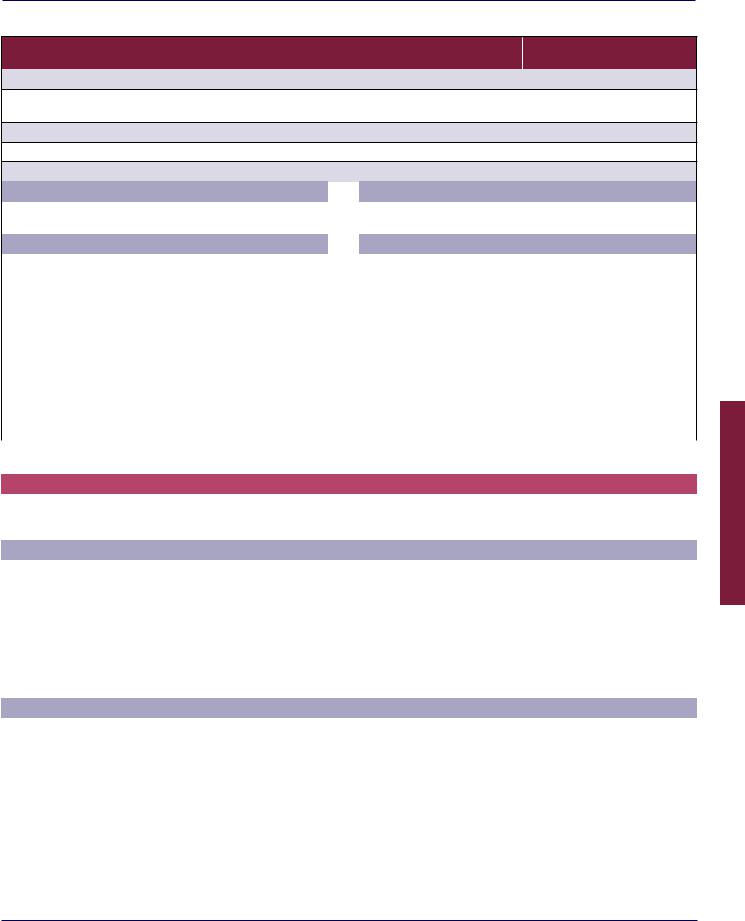
CHAPTER 4 COBIT GOVERNANCE AND MANAGEMENT OBJECTIVES—DETAILED GUIDANCE
Domain: Deliver, Service and Support |
|
Management Objective: DSS01 - Managed Operations |
Focus Area: COBIT Core Model |
Description |
|
Coordinate and execute the activities and operational procedures required to deliver internal and outsourced I&T services. Include the execution of predefined standard operating procedures and the required monitoring activities.
Purpose
Deliver I&T operational product and service outcomes as planned.
The management objective supports the achievement of a set of primary enterprise and alignment goals:
Enterprise Goals |
Æ |
|
Alignment Goals |
|
|
• EG01 Portfolio of competitive products and services |
|
AG05 Delivery of I&T services in line with business requirements |
|||
|
|
|
|||
• EG08 Optimization of internal business process functionality |
|
|
|
|
|
|
|
|
|
|
|
Example Metrics for Enterprise Goals |
|
|
|
Example Metrics for Alignment Goals |
|
|
|
|
|
|
|
EG01 a. Percent of products and services that meet or exceed |
|
|
|
AG05 a. Percent of business stakeholders satisfied that I&T service |
|
targets in revenues and/or market share |
|
|
|
delivery meets agreed service levels |
|
b. Percent of products and services that meet or exceed |
|
|
|
b. Number of business disruptions due to I&T service incidents |
|
customer satisfaction targets |
|
|
|
c. Percent of users satisfied with the quality of I&T service |
|
c. Percent of products and services that provide competitive |
|
|
|
delivery |
|
advantage |
|
|
|
|
|
d. Time to market for new products and services |
|
|
|
|
|
EG08 a. Satisfaction levels of board and executive management |
|
|
|
|
|
with business process capabilities |
|
|
|
|
|
b. Satisfaction levels of customers with service delivery |
|
|
|
|
|
capabilities |
|
|
|
|
|
c. Satisfaction levels of suppliers with supply chain |
|
|
|
|
|
capabilities |
|
|
|
|
|
|
|
|
|
|
|
A. Component: Process |
|
|
|
|
|
Management Practice |
|
|
Example Metrics |
|
|
|
|
|
|
|
|
DSS01.01 Perform operational procedures. |
|
|
a. Number of incidents caused by operational problems |
|
|
Maintain and perform operational procedures and operational tasks |
|
|
b. Number of nonstandard operational procedures executed |
||
reliably and consistently. |
|
|
|
|
|
Activities |
|
|
|
|
Capability Level |
|
|
||||
1. Develop and maintain operational procedures and related activities to support all delivered services. |
2 |
||||
2. Maintain a schedule of operational activities and perform the activities. |
|
|
|
||
|
|
||||
3. Verify that all data expected for processing are received and processed completely, accurately and in a timely manner. Deliver |
3 |
||||
output in accordance with enterprise requirements. Support restart and reprocessing needs. Ensure that users are receiving the |
|
||||
right outputs in a secure and timely manner. |
|
|
|
|
|
4. Manage the performance and throughput of the scheduled activities. |
|
|
4 |
||
|
|
||||
5. Monitor incidents and problems dealing with operational procedures and take appropriate action to improve reliability of |
5 |
||||
operational tasks performed. |
|
|
|
|
|
Related Guidance (Standards, Frameworks, Compliance Requirements) |
|
Detailed Reference |
|
||
|
|
|
|
|
|
CMMI Cybermaturity Platform, 2018 |
|
|
TP.SE Safeguard Operational Environment |
|
|
HITRUST CSF version 9, September 2017 |
|
|
09.01 Document Operating Procedures |
|
|
|
|
|
|
|
|
ISO/IEC 27002:2013/Cor.2:2015(E) |
|
|
12.1 Operational procedures and responsibilities |
|
|
|
|
|
|
|
|
ITIL V3, 2011 |
|
|
Service Operation, 4.1 Event Management |
|
|
|
|
|
|
||
National Institute of Standards and Technology Special Publication |
|
|
3.13 Physical and environmental protection (PE-13, PE-14, PE-15) |
||
800-53, Revision 5 (Draft), August 2017 |
|
|
|
|
|
Support and Service Deliver,
231

Build, Acquire and Implement
COBIT® 2019 FRAMEWORK: GOVERNANCE AND MANAGEMENT OBJECTIVES
A. Component: Process (cont.)
Management Practice |
Example Metrics |
|
|
|
|
DSS01.02 Manage outsourced I&T services. |
a. Number of specific/smart KPIs included in outsourcing contracts |
|
Manage the operation of outsourced I&T services to maintain the |
b. Frequency of failure by outsourcing partner to meet KPIs |
|
protection of enterprise information and reliability of service delivery. |
|
|
Activities |
|
Capability Level |
|
|
|
1. Ensure that the enterprise’s requirements for security of information processes adhere to contracts and SLAs with third parties |
3 |
|
hosting or providing services. |
|
|
2.Ensure that the enterprise’s operational business and IT processing requirements and priorities for service delivery adhere to contracts and SLAs with third parties hosting or providing services.
3.Integrate critical internal IT management processes with those of outsourced service providers. This should cover, for example, performance and capacity planning, change management, configuration management, service request and incident management, problem management, security management, business continuity, and the monitoring of process performance and reporting.
4. Plan for independent audit and assurance of the operational environments of outsourced providers to confirm that agreed |
4 |
|
requirements are being adequately addressed. |
|
|
Related Guidance (Standards, Frameworks, Compliance Requirements) |
Detailed Reference |
|
ISF, The Standard of Good Practice for Information Security 2016 |
SC1.2 Outsourcing |
|
|
|
|
ISO/IEC 20000-1:2011(E) |
4.2 Governance of processes operated by other parties |
|
|
|
|
Management Practice |
Example Metrics |
|
DSS01.03 Monitor I&T infrastructure. |
a. Percent of critical operational event types covered by automatic |
|
Monitor the I&T infrastructure and related events. Store sufficient |
detection systems |
|
chronological information in operations logs to reconstruct and review |
b. Percent of infrastructure assets monitored based on service criticality |
|
time sequences of operations and other activities surrounding or |
and the relationship between configuration items and services that |
|
supporting operations. |
depend on them |
|
Activities |
|
Capability Level |
|
|
|
1. Log events. Identify the level of information to be recorded, based on a consideration of risk and performance. |
2 |
|
|
|
|
2. Identify and maintain a list of infrastructure assets that need to be monitored, based on service criticality and the relationship |
3 |
|
between configuration items and services that depend on them. |
|
|
3.Define and implement rules that identify and record threshold breaches and event conditions. Find a balance between generating spurious minor events and significant events so event logs are not overloaded with unnecessary information.
4.Produce event logs and retain them for an appropriate period to assist in future investigations.
5.Ensure that incident tickets are created in a timely manner when monitoring identified deviations from defined thresholds.
6. Establish procedures for monitoring event logs. Conduct regular reviews. |
4 |
|
|
|
|
Related Guidance (Standards, Frameworks, Compliance Requirements) |
|
Detailed Reference |
National Institute of Standards and Technology Special Publication |
|
3.10 Maintenance (MA-2, MA-3) |
800-53, Revision 5 (Draft), August 2017 |
|
|
Management Practice |
|
Example Metrics |
|
|
|
DSS01.04 Manage the environment. |
|
a. Number of people trained to respond to environmental alarm |
Maintain measures for protection against environmental factors. |
|
procedures |
Install specialized equipment and devices to monitor and control the |
|
b. Number of risk scenarios defined for environmental threats |
environment. |
|
|
232

CHAPTER 4 COBIT GOVERNANCE AND MANAGEMENT OBJECTIVES—DETAILED GUIDANCE
A. Component: Process (cont.)
Activities |
Capability Level |
|
|
1. Identify natural and man-made disasters that might occur in the area where the IT facilities are located. Assess the potential |
2 |
effect on the IT facilities. |
|
2.Identify how I&T equipment, including mobile and off-site equipment, is protected against environmental threats. Ensure that the policy limits or excludes eating, drinking and smoking in sensitive areas, and prohibits storage of stationery and other supplies that pose a fire hazard within computer rooms.
3.Keep the IT sites and server rooms clean and in a safe condition at all times (i.e., no mess, no paper or cardboard boxes, no filled dustbins, no flammable chemicals or materials).
4. Situate and construct IT facilities to minimize and mitigate susceptibility to environmental threats (e.g., theft, air, fire, smoke, |
3 |
water, vibration, terror, vandalism, chemicals, explosives). Consider specific security zones and/or fireproof cells (e.g., locating |
|
production and development environments/servers away from each other). |
|
5.Compare measures and contingency plans against insurance policy requirements and report results. Address points of noncompliance in a timely manner.
6.Respond to environmental alarms and other notifications. Document and test procedures, which should include prioritization of alarms and contact with local emergency response authorities. Train personnel in these procedures.
7. Regularly monitor and maintain devices that proactively detect environmental threats (e.g., fire, water, smoke, humidity). |
4 |
|
Related Guidance (Standards, Frameworks, Compliance Requirements) |
Detailed Reference |
|
|
|
|
National Institute of Standards and Technology Special Publication |
2.1 System and system elements; 3.2 Categorization (Task 5, 6) |
|
800-37, Revision 2 (Draft), May 2018 |
|
|
Management Practice |
Example Metrics |
|
|
|
|
DSS01.05 Manage facilities. |
a. Time since last test of uninterruptible power supply |
|
Manage facilities, including power and communications equipment, in |
b. Number of people trained on health and safety guidelines |
|
line with laws and regulations, technical and business requirements, |
|
|
vendor specifications, and health and safety guidelines. |
|
|
Activities |
Capability Level |
|
|
|
|
1. Examine the IT facilities’ requirement for protection against power fluctuations and outages, in conjunction with other business |
2 |
|
continuity planning requirements. Procure suitable uninterruptible supply equipment (e.g., batteries, generators) to support |
|
|
business continuity planning. |
|
|
2.Regularly test the uninterruptible power supply’s mechanisms. Ensure that power can be switched to the supply without any significant effect on business operations.
3.Ensure that the facilities housing the I&T systems have more than one source for dependent utilities (e.g., power, telecommunications, water, gas). Separate the physical entrance of each utility.
4.Confirm that cabling external to the IT site is located underground or has suitable alternative protection. Determine that cabling within the IT site is contained within secured conduits, and access to wiring cabinets is restricted to authorized personnel. Properly protect cabling against damage caused by fire, smoke, water, interception and interference.
5.Ensure that cabling and physical patching (data and phone) are structured and organized. Cabling and conduit structures should be documented (e.g., blueprint building plan and wiring diagrams).
6.On regular basis, educate personnel on health and safety laws, regulations, and relevant guidelines. Educate personnel on fire and rescue drills to ensure knowledge and actions taken in case of fire or similar incidents.
7. Ensure that IT sites and equipment are maintained according to the supplier’s recommended service intervals and |
3 |
specifications. Ensure that maintenance is carried out only by authorized personnel. |
|
8.Analyze the facilities housing’s high-availability systems for redundancy and fail-over cabling requirements (external and internal).
9.Ensure that IT sites and facilities are in ongoing compliance with relevant health and safety laws, regulations, guidelines, and vendor specifications.
10. Record, monitor, manage and resolve facilities incidents in line with the I&T incident management process. Make available |
4 |
reports on facilities incidents for which disclosure is required by laws and regulations. |
|
11.Analyze physical alterations to IT sites or premises to reassess the environmental risk (e.g., fire or water damage). Report results of this analysis to business continuity and facilities management.
Related Guidance (Standards, Frameworks, Compliance Requirements) Detailed Reference
No related guidance for this management practice
Support and Service Deliver,
233

Build, Acquire and Implement
COBIT® 2019 FRAMEWORK: GOVERNANCE AND MANAGEMENT OBJECTIVES
B. Component: Organizational Structures
Key Management Practice |
|
|
|
|
Chief Operating Officer |
Chief Information Officer |
Chief Technology Officer |
Head IT Operations |
Information Security Manager |
Privacy Officer |
DSS01.01 Perform operational procedures. |
|
|
|
|
R |
A |
R |
R |
|
|
|
|
|
|
|
|
|
|
|
|
|
DSS01.02 Manage outsourced I&T services. |
|
|
|
|
|
A |
R |
R |
R |
R |
DSS01.03 Monitor I&T infrastructure. |
|
|
|
|
|
R |
A |
R |
R |
|
DSS01.04 Manage the environment. |
|
|
|
|
|
R |
A |
R |
R |
|
|
|
|
|
|
|
|
|
|
|
|
DSS01.05 Manage facilities. |
|
|
|
|
|
R |
A |
R |
R |
|
Related Guidance (Standards, Frameworks, Compliance Requirements) |
Detailed Reference |
|
|
|
|
|
|
|
||
No related guidance for this component |
|
|
|
|
|
|
|
|
|
|
|
|
|
|
|
|
|
|
|
|
|
|
|
|
|
|
|
|
|
|
|
|
C. Component: Information Flows and Items (see also Section 3.6) |
|
|
|
|
|
|
|
|
|
|
Management Practice |
|
|
Inputs |
Outputs |
|
|
|
|
|
|
|
|
|
|
|
|
|
|
|
|
|
DSS01.01 Perform operational procedures. |
From |
|
Description |
Description |
|
|
To |
|
|
|
|
BAI05.05 |
|
Operation and use plan |
Backup log |
Internal |
|
|
|||
|
|
|
|
|
|
|
|
|||
|
|
|
|
Operational schedule |
Internal |
|
|
|||
DSS01.02 Manage outsourced I&T services. |
APO09.03 |
|
• SLAs |
Independent assurance |
MEA04.02 |
|
||||
|
|
|
• OLAs |
plans |
|
|
|
|
|
|
|
BAI05.05 |
|
Operation and use plan |
|
|
|
|
|
|
|
|
|
|
|
|
|
|
||||
DSS01.03 Monitor I&T infrastructure. |
BAI03.11 |
|
Service definitions |
Asset monitoring rules |
DSS02.01; |
|
||||
|
|
|
|
and event conditions |
DSS02.02 |
|
||||
|
|
|
|
Incident tickets |
DSS02.02 |
|
||||
|
|
|
|
Event logs |
Internal |
|
|
|||
DSS01.04 Manage the environment. |
|
|
|
Environmental policies |
APO01.09 |
|
||||
|
|
|
|
|
|
|
||||
|
|
|
|
Insurance policy reports |
MEA03.03 |
|
||||
DSS01.05 Manage facilities. |
|
|
|
Health and safety |
Internal |
|
|
|||
|
|
|
|
awareness |
|
|
|
|
|
|
|
|
|
|
Facilities assessment |
MEA01.03 |
|
||||
|
|
|
|
reports |
|
|
|
|
|
|
Related Guidance (Standards, Frameworks, Compliance Requirements) |
Detailed Reference |
|
|
|
|
|
|
|
||
National Institute of Standards and Technology Special Publication 800- |
3.2 Categorization (Task 5, 6): Inputs and Outputs |
|
|
|
|
|
||||
37, Revision 2, September 2017 |
|
|
|
|
|
|
|
|
|
|
234
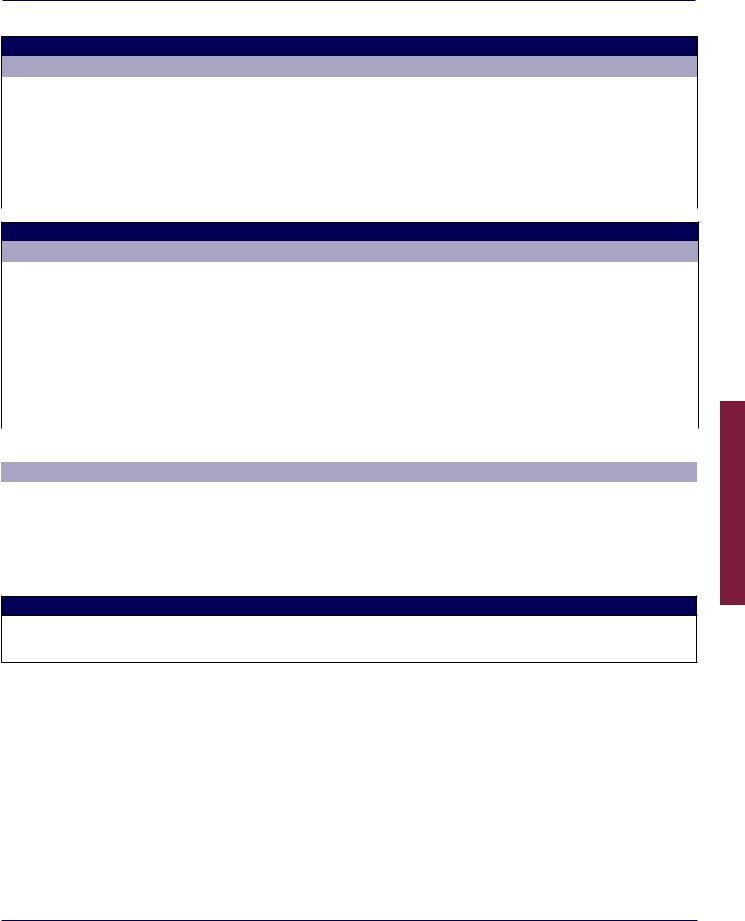
CHAPTER 4 COBIT GOVERNANCE AND MANAGEMENT OBJECTIVES—DETAILED GUIDANCE
D. Component: People, Skills and Competencies
Skill |
Related Guidance (Standards, Frameworks, Compliance Requirements) |
Detailed Reference |
|
|
|
Database administration |
Skills Framework for the Information Age V6, 2015 |
DBAD |
|
|
|
Facilities management |
Skills Framework for the Information Age V6, 2015 |
DCMA |
IT infrastructure |
Skills Framework for the Information Age V6, 2015 |
ITOP |
|
|
|
Methods and tools |
Skills Framework for the Information Age V6, 2015 |
METL |
|
|
|
Service delivery |
e-Competence Framework (e-CF)—A common European Framework for ICT |
C. Run—C.3. Service Delivery |
|
Professionals in all industry sectors—Part 1: Framework, 2016 |
|
Storage management |
Skills Framework for the Information Age V6, 2015 |
STMG |
E. Component: Policies and Procedures
Relevant Policy |
Policy Description |
Related Guidance |
Detailed Reference |
|
Service management policy |
Provides direction and guidance to |
(1) ISO/IEC 20000-1:2011(E); (2) |
(1) 4.1.2 Service management |
|
|
ensure effective management and |
ITIL V3, 2011 |
policy; (2) Service Strategy, 3. |
|
|
implementation of all I&T services |
|
Service strategy principles |
|
|
to meet business and customer |
|
|
|
|
requirements, within a framework |
|
|
|
|
of performance measurement. |
|
|
|
|
Covers management of risk |
|
|
|
|
related to I&T services. (The ITIL |
|
|
|
|
V3 framework offers detailed |
|
|
|
|
guidance on service management |
|
|
|
|
and optimization of risk related to |
|
|
|
|
services.) |
|
|
|
|
|
|
|
|
F. Component: Culture, Ethics and Behavior |
|
|
|
|
Key Culture Elements |
Related Guidance |
Detailed Reference |
|
|
|
|
|
|
|
Create a culture of habitual excellence throughout the organization. |
|
|
|
|
Encourage employees to excel. Create an environment in which |
|
|
|
|
operational procedures deliver (more than) the necessary services while |
|
|
|
|
also allowing employees to question the status quo and try new ideas. |
|
|
|
|
Manage operational excellence through employee engagement and |
|
|
|
|
continuous improvement. Apply a customer-centric approach (for both |
|
|
|
|
internal and external customers). |
|
|
|
|
G. Component: Services, Infrastructure and Applications
•Cloud hosting services
•Infrastructure monitoring tools
•Service level monitoring tools
Support and Service Deliver,
235

COBIT® 2019 FRAMEWORK: GOVERNANCE AND MANAGEMENT OBJECTIVES
Page intentionally left blank
Build, Acquire and Implement
236
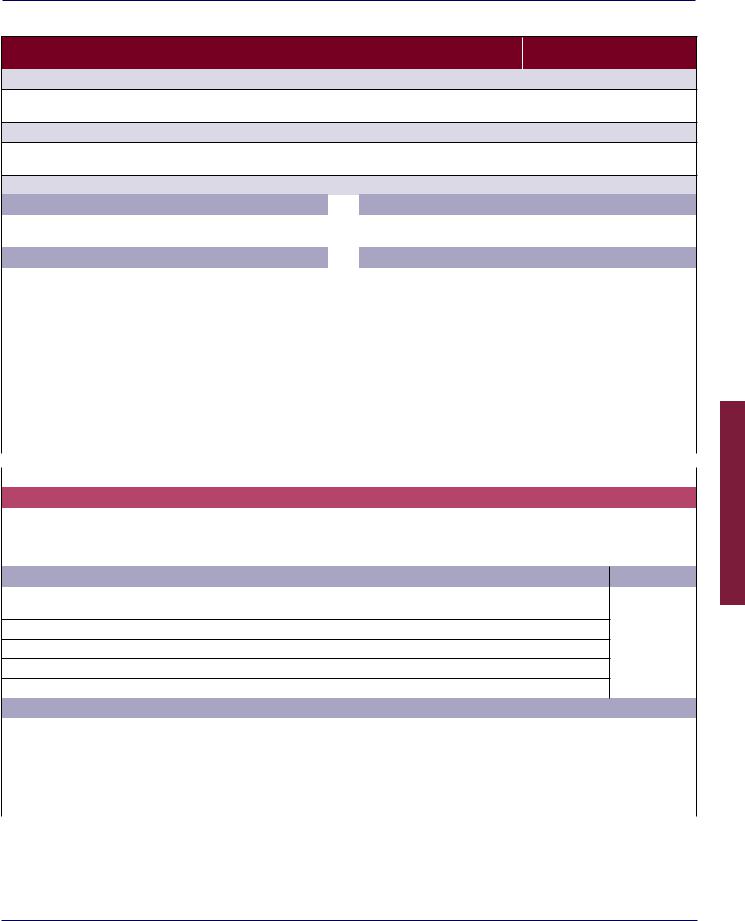
CHAPTER 4 COBIT GOVERNANCE AND MANAGEMENT OBJECTIVES—DETAILED GUIDANCE
Domain: Deliver, Service and Support |
|
Management Objective: DSS02 - Managed Service Requests and Incidents |
Focus Area: COBIT Core Model |
Description |
|
Provide timely and effective response to user requests and resolution of all types of incidents. Restore normal service; record and fulfil user requests; and record, investigate, diagnose, escalate and resolve incidents.
Purpose
Achieve increased productivity and minimize disruptions through quick resolution of user queries and incidents. Assess the impact of changes and deal with service incidents. Resolve user requests and restore service in response to incidents.
The management objective supports the achievement of a set of primary enterprise and alignment goals:
Enterprise Goals |
Æ |
|
Alignment Goals |
|
|
• EG01 Portfolio of competitive products and services |
|
AG05 Delivery of I&T services in line with business requirements |
|||
|
|
|
|||
• EG08 Optimization of internal business process functionality |
|
|
|
|
|
Example Metrics for Enterprise Goals |
|
|
|
Example Metrics for Alignment Goals |
|
|
|
|
|
|
|
EG01 a. Percent of products and services that meet or exceed |
|
|
|
AG05 a. Percent of business stakeholders satisfied that I&T service |
|
targets in revenues and/or market share |
|
|
|
delivery meets agreed service levels |
|
b. Percent of products and services that meet or exceed |
|
|
|
b. Number of business disruptions due to I&T service incidents |
|
customer satisfaction targets |
|
|
|
c. Percent of users satisfied with the quality of I&T service |
|
c. Percent of products and services that provide competitive |
|
|
|
delivery |
|
advantage |
|
|
|
|
|
d. Time to market for new products and services |
|
|
|
|
|
EG08 a. Satisfaction levels of board and executive management |
|
|
|
|
|
with business process capabilities |
|
|
|
|
|
b. Satisfaction levels of customers with service delivery |
|
|
|
|
|
capabilities |
|
|
|
|
|
c. Satisfaction levels of suppliers with supply chain |
|
|
|
|
|
capabilities |
|
|
|
|
|
|
|
|
|
|
|
A. Component: Process |
|
|
|
|
|
Management Practice |
|
|
Example Metrics |
|
|
|
|
|
|
||
DSS02.01 Define classification schemes for incidents and |
|
|
a. Total number of service requests and incidents per priority level |
||
service requests. |
|
|
b. Total number of incidents escalated |
|
|
Define classification schemes and models for incidents and |
|
|
|
|
|
service requests. |
|
|
|
|
|
Activities |
|
|
|
|
Capability Level |
1. Define incident and service request classification and prioritization schemes, and criteria for problem registration. Use this |
3 |
||||
information to ensure consistent approaches for handling and informing users about problems and conducting trend analysis. |
|
||||
2.Define incident models for known errors to enable efficient and effective resolution.
3.Define service request models according to service request type to enable self-help and efficient service for standard requests.
4.Define incident escalation rules and procedures, especially for major incidents and security incidents.
5.Define knowledge sources on incidents and requests and describe how to use them.
Related Guidance (Standards, Frameworks, Compliance Requirements) |
Detailed Reference |
|
|
CMMI Cybermaturity Platform, 2018 |
IA.IP Implement Incident Investigation Processes |
HITRUST CSF version 9, September 2017 |
11.01 Reporting Information Security Incidents and Weaknesses |
|
|
ISF, The Standard of Good Practice for Information Security 2016 |
TM2 Security Incident Management |
|
|
ISO/IEC 20000-1:2011(E) |
8.1 Incident and service request management |
ISO/IEC 27002:2013/Cor.2:2015(E) |
16. Information security incident management |
|
|
Support and Service Deliver,
237
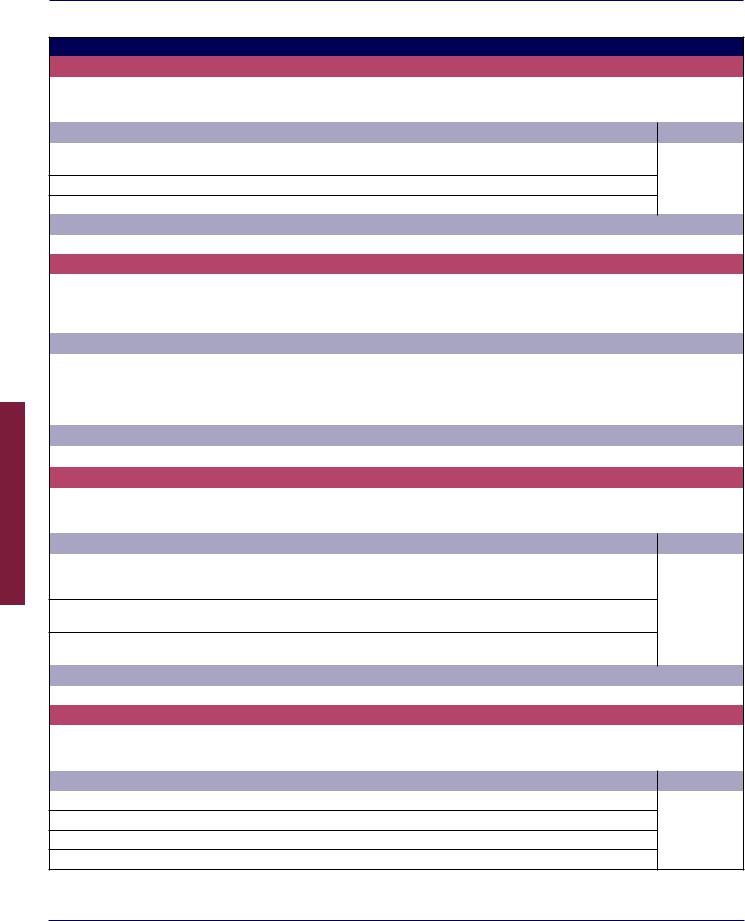
Build, Acquire and Implement
COBIT® 2019 FRAMEWORK: GOVERNANCE AND MANAGEMENT OBJECTIVES
A. Component: Process (cont.)
Management Practice |
Example Metrics |
|
|
|
|
DSS02.02 Record, classify and prioritize requests and incidents. |
a. Number of types and categories defined for recording service requests |
|
Identify, record and classify service requests and incidents and assign a |
and incidents |
|
priority according to business criticality and service agreements. |
b. Number of service requests and incidents that are not categorized |
|
Activities |
|
Capability Level |
|
|
|
1. Log all service requests and incidents, recording all relevant information, so they can be handled effectively and a full historical |
2 |
|
record can be maintained. |
|
|
2.To enable trend analysis, classify service requests and incidents by identifying type and category.
3.Prioritize service requests and incidents based on the SLA service definition of business impact and urgency.
Related Guidance (Standards, Frameworks, Compliance Requirements) |
Detailed Reference |
|
|
|
|
|
|
No related guidance for this management practice |
|
|
|
|
|
|
|
Management Practice |
Example Metrics |
|
|
DSS02.03 Verify, approve and fulfill service requests. |
a. Mean elapsed time for handling each type of service request |
||
Select the appropriate request procedures and verify that the service |
b. Percent of service requests that fulfill defined request criteria |
||
requests fulfill defined request criteria. Obtain approval, if required, and |
|
|
|
fulfill the requests. |
|
|
|
Activities |
|
|
Capability Level |
|
|
|
|
1. Verify entitlement for service requests using, where possible, a predefined process flow and standard changes. |
|
2 |
|
2. Obtain financial and functional approval or sign-off, if required, or predefined approvals for agreed standard changes. |
|
|
|
|
|
|
|
3. Fulfill the requests by performing the selected request procedure. Where possible, use self-help automated menus and |
|
3 |
|
predefined request models for frequently requested items. |
|
|
|
Related Guidance (Standards, Frameworks, Compliance Requirements) |
Detailed Reference |
|
|
|
|
|
|
ITIL V3, 2011 |
Service Operation, 4.3 Request Fulfilment |
|
|
|
|
|
|
Management Practice |
Example Metrics |
|
|
|
|
|
|
DSS02.04 Investigate, diagnose and allocate incidents. |
a. Number of identified and recorded incident symptoms |
|
|
Identify and record incident symptoms, determine possible causes, and |
b. Number of correctly determined symptom causes |
|
|
allocate for resolution. |
c. Number of duplicate problems in the reference log |
|
|
Activities |
|
|
Capability Level |
|
|
||
1. Identify and describe relevant symptoms to establish the most probable causes of the incidents. Reference available |
2 |
||
knowledge resources (including known errors and problems) to identify possible incident resolutions (temporary workarounds |
|
||
and/or permanent solutions). |
|
|
|
2.If a related problem or known error does not already exist and if the incident satisfies agreed criteria for problem registration, log a new problem.
3.Assign incidents to specialist functions if deeper expertise is needed. Engage the appropriate level of management, where and if needed.
Related Guidance (Standards, Frameworks, Compliance Requirements) |
Detailed Reference |
|
|
|
|
No related guidance for this management practice |
|
|
|
|
|
Management Practice |
Example Metrics |
|
DSS02.05 Resolve and recover from incidents. |
a. Percent of incidents resolved within agreed SLA |
|
Document, apply and test the identified solutions or workarounds. |
b. Percent of stakeholder satisfaction with resolution and recovery |
|
Perform recovery actions to restore the I&T-related service. |
from incident |
|
Activities |
|
Capability Level |
1. Select and apply the most appropriate incident resolutions (temporary workaround and/or permanent solution). |
2 |
|
2.Record whether workarounds were used for incident resolution.
3.Perform recovery actions, if required.
4.Document incident resolution and assess if the resolution can be used as a future knowledge source.
238

CHAPTER 4 COBIT GOVERNANCE AND MANAGEMENT OBJECTIVES—DETAILED GUIDANCE
A. Component: Process (cont.)
Related Guidance (Standards, Frameworks, Compliance Requirements) |
Detailed Reference |
|
|
|
|
|
|
ITIL V3, 2011 |
Service Operation, 4.2 Incident Management |
|
|
|
|
|
|
National Institute of Standards and Technology Framework for Improving |
RC.RP Recovery Planning |
|
|
Critical Infrastructure Cybersecurity v1.1, April 2018 |
|
|
|
National Institute of Standards and Technology Special Publication |
3.9 Incident response (IR-4, IR-5, IR-6) |
|
|
800-53, Revision 5 (Draft), August 2017 |
|
|
|
The CIS Critical Security Controls for Effective Cyber Defense Version |
CSC 19: Incident Response and Management |
|
|
6.1, August 201 |
|
|
|
Management Practice |
Example Metrics |
|
|
DSS02.06 Close service requests and incidents. |
a. Level of user satisfaction with service request fulfilment |
|
|
Verify satisfactory incident resolution and/or fulfilment of requests, |
b. Percent of incidents resolved within an agreed/acceptable period |
||
and close. |
of time |
|
|
Activities |
|
Capability Level |
|
1. Verify with the affected users that the service request has been fulfilled satisfactorily or the incident has been resolved |
|
2 |
|
satisfactorily and within an agreed/acceptable period of time. |
|
|
|
2. Close service requests and incidents. |
|
|
|
|
|
|
|
Related Guidance (Standards, Frameworks, Compliance Requirements) |
Detailed Reference |
|
|
|
|
|
|
No related guidance for this management practice |
|
|
|
Management Practice |
Example Metrics |
|
|
|
|
|
|
DSS02.07 Track status and produce reports. |
a. Mean time between incidents for the I&T-enabled service |
|
|
Regularly track, analyze and report incidents and fulfilment of requests. |
b. Number and percent of incidents causing disruption to |
|
|
Examine trends to provide information for continual improvement. |
business-critical processes |
|
|
Activities |
|
Capability Level |
|
|
|
||
1. Monitor and track incident escalations and resolutions and request handling procedures to progress toward resolution or |
2 |
||
completion. |
|
|
|
2 Identify information stakeholders and their needs for data or reports. Identify reporting frequency and medium. |
3 |
||
|
|
||
3. Produce and distribute timely reports or provide controlled access to online data. |
4 |
||
4.Analyze incidents and service requests by category and type. Establish trends and identify patterns of recurring issues, SLA breaches or inefficiencies.
5. Use the information as input to continual improvement planning. |
5 |
|
|
Related Guidance (Standards, Frameworks, Compliance Requirements) |
Detailed Reference |
|
|
CMMI Cybermaturity Platform, 2018 |
MI.IM Ensure Incident Mitigation; IR.IR Incident Reporting |
|
|
National Institute of Standards and Technology Special Publication |
3.9 Incident response (IR-7, IR-8) |
800-53, Revision 5 (Draft), August 2017 |
|
Support and Service Deliver,
239

Build, Acquire and Implement
COBIT® 2019 FRAMEWORK: GOVERNANCE AND MANAGEMENT OBJECTIVES
B. Component: Organizational Structures
Key Management Practice |
Chief Technology Officer |
Business Process Owners |
Head Development |
Head IT Operations |
Service Manager |
Information Security Manager |
|
|
|
|
|
|
|
DSS02.01 Define classification schemes for incidents and service requests. |
A |
|
R |
R |
R |
|
DSS02.02 Record, classify and prioritize requests and incidents. |
A |
|
|
R |
R |
|
|
|
|
|
|
|
|
DSS02.03 Verify, approve and fulfil service requests. |
A |
R |
R |
R |
R |
|
|
|
|
|
|
|
|
DSS02.04 Investigate, diagnose and allocate incidents. |
A |
R |
|
R |
R |
|
DSS02.05 Resolve and recover from incidents. |
A |
|
R |
R |
R |
R |
|
|
|
|
|
|
|
DSS02.06 Close service requests and incidents. |
A |
|
|
R |
R |
R |
|
|
|
|
|
|
|
DSS02.07 Track status and produce reports. |
A |
|
|
R |
R |
|
Related Guidance (Standards, Frameworks, Compliance Requirements) |
Detailed Reference |
|
|
ISO/IEC 27002:2013/Cor.2:2015(E) |
16.1.1 Responsibilities and procedures |
C. Component: Information Flows and Items (see also Section 3.6)
Management Practice |
|
Inputs |
Outputs |
|
|
|
|
|
|
|
|
DSS02.01 Define classification schemes for incidents |
From |
Description |
Description |
To |
|
and service requests. |
|
|
|
|
|
APO09.03 |
SLAs |
Criteria for problem |
DSS03.01 |
||
|
|||||
|
|
|
registration |
|
|
|
BAI10.02 |
Configuration repository |
Rules for incident |
Internal |
|
|
|
|
escalation |
|
|
|
BAI10.03 |
Updated repository with |
Incident and service |
Internal |
|
|
|
configuration items |
request classification |
|
|
|
|
|
schemes and models |
|
|
|
BAI10.04 |
Configuration status |
|
||
|
|
|
|||
|
|
reports |
|
|
|
|
DSS01.03 |
Asset monitoring rules |
|
|
|
|
|
and event conditions |
|
|
|
|
DSS03.01 |
Problem classification |
|
|
|
|
|
scheme |
|
|
|
|
DSS04.03 |
Incident response |
|
|
|
|
|
actions and |
|
|
|
|
|
communications |
|
|
|
DSS02.02 Record, classify and prioritize requests and |
APO09.03 |
SLAs |
Classified and prioritized |
APO08.03; |
|
incidents. |
|
|
incidents and service |
APO09.04; |
|
|
|
|
requests |
APO13.03; |
|
|
|
|
|
DSS03.05 |
|
|
BAI04.05 |
Emergency escalation |
Incident and service |
Internal; |
|
|
|
procedure |
request log |
MEA04.07 |
|
|
DSS01.03 |
• Asset monitoring rules |
|
|
|
|
|
and event conditions |
|
|
|
|
|
• Incident tickets |
|
|
|
|
DSS05.07 |
Security-related incident |
|
|
|
|
|
tickets |
|
|
|
|
|
|
|
|
240
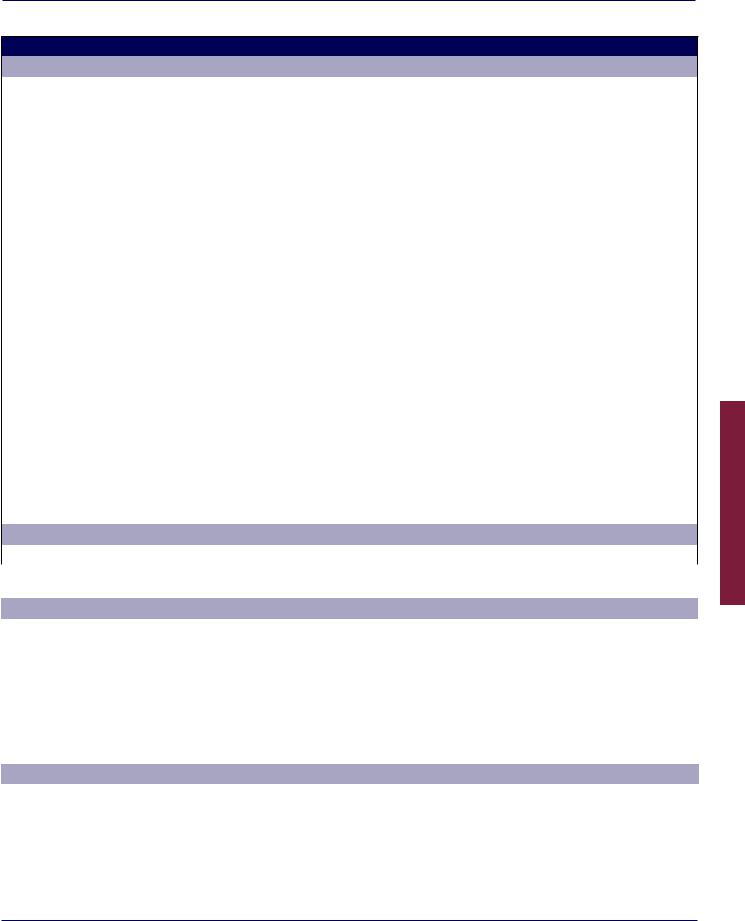
CHAPTER 4 COBIT GOVERNANCE AND MANAGEMENT OBJECTIVES—DETAILED GUIDANCE
C. Component: Information Flows and Items (see also Section 3.6) (cont.)
Management Practice |
|
|
Inputs |
|
|
|
Outputs |
|
|
|||
|
|
|
|
|
|
|
|
|
|
|
|
|
DSS02.03 Verify, approve and fulfil service requests. |
From |
|
Description |
|
|
Description |
|
To |
|
|||
|
|
|
|
|
|
|
|
|
|
|
|
|
|
|
|
APO12.06 |
|
Risk-related root causes |
|
Approved service |
|
BAI06.01 |
|
||
|
|
|
|
|
|
|
requests |
|
|
|
||
|
|
|
|
|
|
|
Fulfilled service requests |
|
Internal |
|
||
DSS02.04 Investigate, diagnose and allocate incidents. |
BAI07.07 |
|
Supplemental support |
|
Problem log |
|
DSS03.01 |
|
||||
|
|
|
|
|
plan |
|
|
|
|
|
|
|
|
|
|
|
|
|
Incident symptoms |
|
Internal |
|
|||
|
|
|
|
|
|
|
|
|
||||
|
|
|
|
|
|
|
|
|
|
|
|
|
DSS02.05 Resolve and recover from incidents. |
APO12.06 |
|
Risk-related incident |
|
Incident resolutions |
|
DSS03.03; |
|
||||
|
|
|
|
|
response plans |
|
|
|
|
|
DSS03.04; |
|
|
|
|
|
|
|
|
|
|
|
|
DSS03.05; |
|
|
|
|
DSS03.03 |
|
Known error records |
|
|
|
|
|
|
|
|
|
|
|
|
|
|
|
|
MEA04.07 |
|
||
|
|
|
DSS03.04 |
|
Communication of |
|
|
|
|
|
|
|
|
|
|
|
|
|
|
|
|
|
|
||
|
|
|
|
|
knowledge learned |
|
|
|
|
|
|
|
DSS02.06 Close service requests and incidents. |
DSS03.04 |
|
Closed problem records |
|
User confirmation of |
|
APO08.03 |
|
||||
|
|
|
|
|
|
|
satisfactory fulfilment or |
|
|
|
||
|
|
|
|
|
|
|
resolution |
|
|
|
||
|
|
|
|
|
|
|
Closed service requests |
|
APO08.03; |
|
||
|
|
|
|
|
|
|
and incidents |
|
APO09.04; |
|
||
|
|
|
|
|
|
|
|
|
|
|
DSS03.04 |
|
DSS02.07 Track status and produce reports. |
APO09.03 |
|
OLAs |
|
Incident status and trends |
|
APO08.03; |
|
||||
|
|
|
|
|
|
|
report |
|
APO09.04; |
|
||
|
|
|
|
|
|
|
|
|
|
|
APO11.04; |
|
|
|
|
|
|
|
|
|
|
|
|
APO12.01; |
|
|
|
|
|
|
|
|
|
|
|
|
MEA01.03 |
|
|
|
|
DSS03.01 |
|
Problem status reports |
|
Request fulfilment status |
|
APO08.03; |
|
||
|
|
|
|
|
|
|
and trends report |
|
APO09.04; |
|
||
|
|
|
DSS03.02 |
|
Problem resolution |
|
|
|
||||
|
|
|
|
|
|
|
|
|
APO11.04; |
|
||
|
|
|
|
|
reports |
|
|
|
|
|
|
|
|
|
|
|
|
|
|
|
|
|
MEA01.03 |
|
|
|
|
|
|
|
|
|
|
|
|
|
|
|
|
|
|
DSS03.05 |
|
Problem resolution |
|
|
|
|
|
|
|
|
|
|
|
|
|
|
|
|
|
|
||
|
|
|
|
|
monitoring reports |
|
|
|
|
|
|
|
|
|
|
|
|
|
|
|
|
|
|
|
|
Related Guidance (Standards, Frameworks, Compliance Requirements) |
Detailed Reference |
|
|
|
|
|
|
|||||
No related guidance for this component |
|
|
|
|
|
|
|
|
|
|
||
|
|
|
|
|
|
|
|
|
|
|
|
|
|
|
|
|
|
|
|
|
|
|
|
|
|
D. Component: People, Skills and Competencies |
|
|
|
|
|
|
|
|
|
|
||
Skill |
Related Guidance (Standards, Frameworks, Compliance Requirements) |
|
|
Detailed Reference |
|
|||||||
|
|
|
|
|
|
|
|
|
||||
Application support |
Skills Framework for the Information Age V6, 2015 |
|
|
ASUP |
|
|
||||||
|
|
|
|
|
|
|
|
|
||||
Customer service support |
Skills Framework for the Information Age V6, 2015 |
|
|
CSMG |
|
|
||||||
Incident management |
Skills Framework for the Information Age V6, 2015 |
|
|
USUP |
|
|
||||||
|
|
|
|
|
|
|
|
|
||||
Network support |
Skills Framework for the Information Age V6, 2015 |
|
|
NTAS |
|
|
||||||
|
|
|
|
|
|
|
||||||
User support |
e-Competence Framework (e-CF)—A common European Framework for ICT |
C. Run—C.1. User Support |
|
|||||||||
|
Professionals in all industry sectors—Part 1: Framework, 2016 |
|
|
|
|
|
|
|||||
|
|
|
|
|
|
|
|
|
|
|
|
|
E. Component: Policies and Procedures |
|
|
|
|
|
|
|
|
|
|
||
Relevant Policy |
|
Policy Description |
|
Related Guidance |
|
|
Detailed Reference |
|
||||
|
|
|
|
|
|
|
|
|||||
Service request policy |
|
States rationale and provides |
ITIL V3, 2011 |
|
|
Service Operation, 3. Service |
|
|||||
|
|
guidance for service and incident |
|
|
|
|
|
operation principles |
|
|
||
|
|
requests and their documentation. |
|
|
|
|
|
|
|
|
|
|
Support and Service Deliver,
241
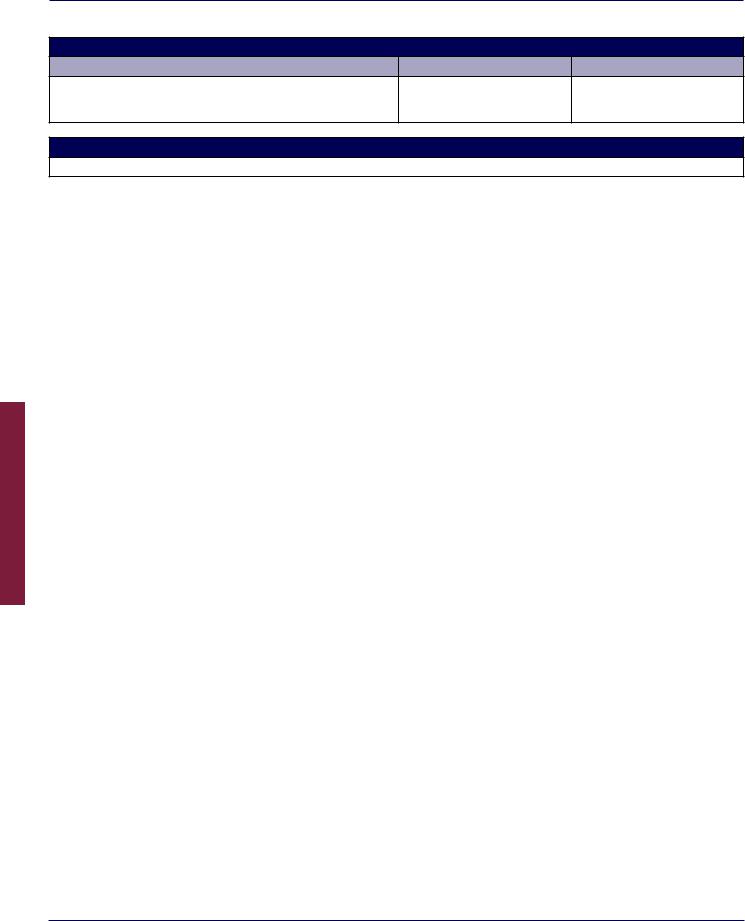
COBIT® 2019 FRAMEWORK: GOVERNANCE AND MANAGEMENT OBJECTIVES
F. Component: Culture, Ethics and Behavior
Key Culture Elements |
Related Guidance |
Detailed Reference |
Enable employees to identify incidents on a correct and timely basis and implement appropriate escalation paths. Encourage prevention. Respond to and resolve incidents immediately. Avoid a hero culture.
G. Component: Services, Infrastructure and Applications
Incident tracking tools and system
Build, Acquire and Implement
242

CHAPTER 4 COBIT GOVERNANCE AND MANAGEMENT OBJECTIVES—DETAILED GUIDANCE
Domain: Deliver, Service and Support |
|
Management Objective: DSS03 - Managed Problems |
Focus Area: COBIT Core Model |
Description |
|
Identify and classify problems and their root causes. Provide timely resolution to prevent recurring incidents. Provide recommendations for improvements.
Purpose
Increase availability, improve service levels, reduce costs, improve customer convenience and satisfaction by reducing the number of operational problems, and identify root causes as part of problem resolution.
The management objective supports the achievement of a set of primary enterprise and alignment goals:
Enterprise Goals |
Æ |
|
Alignment Goals |
|
||
• EG01 Portfolio of competitive products and services |
|
AG05 Delivery of I&T services in line with business requirements |
||||
|
|
|
||||
• EG08 Optimization of internal business process functionality |
|
|
|
|
|
|
Example Metrics for Enterprise Goals |
|
|
|
Example Metrics for Alignment Goals |
|
|
|
|
|
|
|
|
|
EG01 |
a. Percent of products and services that meet or exceed |
|
|
|
AG05 a. Percent of business stakeholders satisfied that I&T service |
|
|
targets in revenues and/or market share |
|
|
|
delivery meets agreed service levels |
|
|
b. Percent of products and services that meet or exceed |
|
|
|
b. Number of business disruptions due to I&T service incidents |
|
|
customer satisfaction targets |
|
|
|
c. Percent of users satisfied with the quality of I&T service |
|
|
c. Percent of products and services that provide competitive |
|
|
|
delivery |
|
|
advantage |
|
|
|
|
|
|
d. Time to market for new products and services |
|
|
|
|
|
EG08 a. Satisfaction levels of board and executive management |
|
|
|
|
|
|
|
with business process capabilities |
|
|
|
|
|
|
b. Satisfaction levels of customers with service delivery |
|
|
|
|
|
|
capabilities |
|
|
|
|
|
|
c. Satisfaction levels of suppliers with supply chain |
|
|
|
|
|
|
capabilities |
|
|
|
|
|
|
|
|
|
|
|
|
A. Component: Process |
|
|
|
|
|
|
Management Practice |
|
|
Example Metrics |
|
||
|
|
|
|
|
||
DSS03.01 Identify and classify problems. |
|
|
a. Percent of major incidents for which problems were logged |
|
||
Define and implement criteria and procedures to identify and |
|
|
b. Percent of incidents solved in accordance with agreed SLAs |
|
||
report problems. Include problem classification, categorization and |
|
|
c. Percent of problems appropriately identified, including classification, |
|||
prioritization. |
|
|
|
categorization and prioritization |
|
|
Activities |
|
|
|
Capability Level |
||
1. Identify problems through the correlation of incident reports, error logs and other problem identification resources. |
2 |
|||||
2.Handle all problems formally with access to all relevant data. Include information from the IT change management system and IT configuration/asset and incident details.
3.Define appropriate support groups to assist with problem identification, root cause analysis and solution determination to support problem management. Determine support groups based on predefined categories, such as hardware, network, software, applications and support software.
4.Define priority levels through consultation with the business to ensure that problem identification and root cause analysis are handled in a timely manner according to the agreed SLAs. Base priority levels on business impact and urgency.
5.Report the status of identified problems to the service desk so customers and IT management can be kept informed.
6.Maintain a single problem management catalog to register and report problems identified. Use the catalog to establish audit trails of the problem management processes, including the status of each problem (i.e., open, reopen, in progress or closed).
Related Guidance (Standards, Frameworks, Compliance Requirements) |
Detailed Reference |
|
|
ISO/IEC 20000-1:2011(E) |
8.2 Problem management |
Support and Service Deliver,
243

Build, Acquire and Implement
COBIT® 2019 FRAMEWORK: GOVERNANCE AND MANAGEMENT OBJECTIVES
A. Component: Process (cont.)
Management Practice |
Example Metrics |
|
|
|
|
DSS03.02 Investigate and diagnose problems. |
a. Number of identified problems classified as known errors |
|
Investigate and diagnose problems using relevant subject matter experts |
b. Percent of problems investigated and diagnosed throughout their |
|
to assess and analyze root causes. |
life cycle |
|
Activities |
|
Capability Level |
|
|
|
1. Identify problems that may be known errors by comparing incident data with the database of known and suspected errors (e.g., |
3 |
|
those communicated by external vendors). Classify problems as known errors. |
|
|
2.Associate the affected configuration items to the established/known error.
3.Produce reports to communicate the progress in resolving problems and to monitor the continuing impact of problems not solved. Monitor the status of the problem-handling process throughout its life cycle, including input from IT change and configuration management.
Related Guidance (Standards, Frameworks, Compliance Requirements) |
Detailed Reference |
|
|
|
|
No related guidance for this management practice |
|
|
Management Practice |
Example Metrics |
|
|
|
|
DSS03.03 Raise known errors. |
a. Number of problems with satisfactory resolution that addressed |
|
As soon as root causes of problems are identified, create known-error |
root causes |
|
records, document appropriate workarounds and identify potential |
b. Percent of stakeholder satisfaction with identification of root causes, |
|
solutions. |
creation of known-error records and appropriate workarounds, and |
|
|
identification of potential solutions |
|
Activities |
|
Capability Level |
|
|
|
1. As soon as the root causes of problems are identified, create known-error records and develop a suitable workaround. |
2 |
|
2. Identify, evaluate, prioritize and process (via IT change management) solutions to known errors, based on a cost/benefit |
3 |
|
business case and business impact and urgency. |
|
|
Related Guidance (Standards, Frameworks, Compliance Requirements) |
Detailed Reference |
|
|
|
|
No related guidance for this management practice |
|
|
|
|
|
Management Practice |
Example Metrics |
|
DSS03.04 Resolve and close problems. |
a. Decrease in number of recurring incidents caused by unresolved |
|
Identify and initiate sustainable solutions addressing the root cause. |
problems |
|
Raise change requests via the established change management process, |
b. Percent of workarounds defined for open problems |
|
if required, to resolve errors. Ensure that the personnel affected are |
|
|
aware of the actions taken and the plans developed to prevent future |
|
|
incidents from occurring. |
|
|
Activities |
|
Capability Level |
1. Close problem records either after confirmation for successful elimination of the known error or after agreement with the |
2 |
|
business on how to alternatively handle the problem. |
|
|
2.Inform the service desk of the schedule for problem closure (e.g., the schedule for fixing the known errors, the possible workaround or the fact that the problem will remain until the change is implemented) and the consequences of the approach taken. Keep affected users and customers informed as appropriate.
3. Throughout the resolution process, obtain regular reports from IT change management on progress in resolving problems |
3 |
|
and errors. |
|
|
4. Monitor the continuing impact of problems and known errors on services. |
4 |
|
5. Review and confirm the success of resolutions of major problems. |
|
|
|
|
|
6. Make sure the knowledge learned from the review is incorporated into a service review meeting with the business customer. |
5 |
|
|
|
|
Related Guidance (Standards, Frameworks, Compliance Requirements) |
Detailed Reference |
|
No related guidance for this management practice |
|
|
244
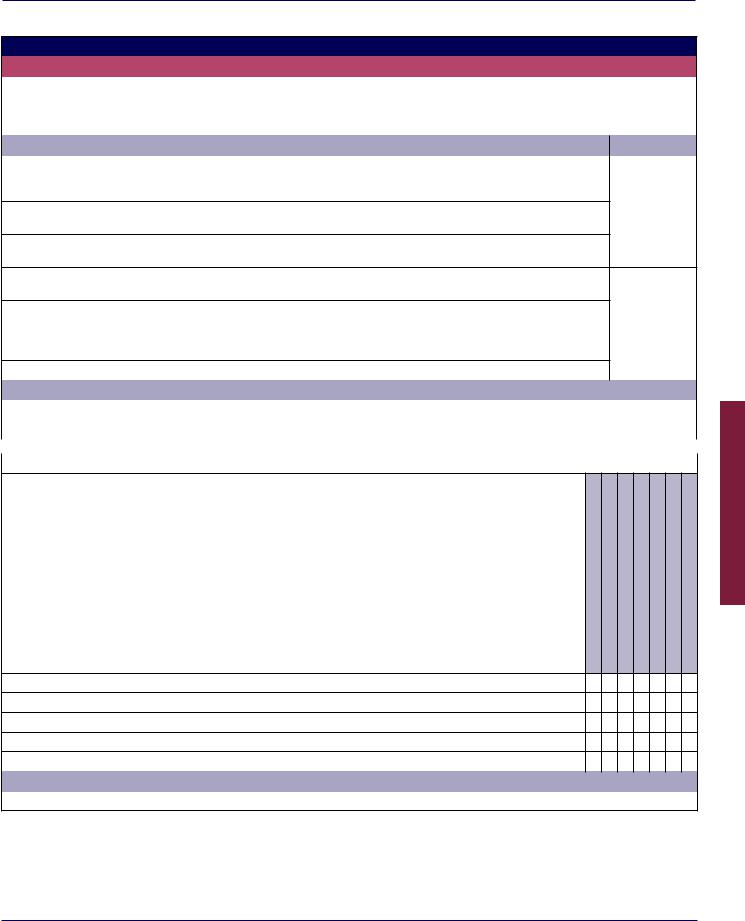
CHAPTER 4 COBIT GOVERNANCE AND MANAGEMENT OBJECTIVES—DETAILED GUIDANCE
A. Component: Process (cont.)
Management Practice |
Example Metrics |
|
|
|
|
DSS03.05 Perform proactive problem management. |
a. Percent of problems logged as part of the proactive problem |
|
Collect and analyze operational data (especially incident and change |
management activity |
|
records) to identify emerging trends that may indicate problems. Log |
b. Percent of key stakeholder satisfaction with the communication of |
|
problem records to enable assessment. |
problem information related to IT changes and incidents |
|
Activities |
Capability Level |
|
1. Capture problem information related to I&T changes and incidents and communicate it to key stakeholders. Communicate via |
3 |
|
reports and periodic meetings among incident, problem, change and configuration management process owners to consider |
|
|
recent problems and potential corrective actions. |
|
|
2.Ensure that process owners and managers from incident, problem, change and configuration management meet regularly to discuss known problems and future planned changes.
3.Identify and initiate sustainable solutions (permanent fixes) addressing the root cause. Raise change requests via the established change management processes.
4. To enable the enterprise to monitor the total costs of problems, capture change efforts resulting from problem management |
4 |
process activities (e.g., fixes to problems and known errors) and report on them. |
|
5.Produce reports to monitor problem resolution against the business requirements and SLAs. Ensure the proper escalation of problems, such as escalating to a higher management level according to agreed criteria, contacting external vendors, or
referring to the change advisory board to increase the priority of an urgent request for change (RFC) to implement a temporary workaround.
6.To optimize the use of resources and reduce workarounds, track problem trends.
Related Guidance (Standards, Frameworks, Compliance Requirements) |
Detailed Reference |
|
|
CMMI Cybermaturity Platform, 2018 |
MI.IC Ensure Incident Containment |
ITIL V3, 2011 |
Service Operation, 4.4 Problem Management |
|
|
|
|
B. Component: Organizational Structures |
|
|
|
Key Management Practice
DSS03.01 Identify and classify problems.
DSS03.02 Investigate and diagnose problems.
DSS03.03 Raise known errors.
DSS03.04 Resolve and close problems.
DSS03.05 Perform proactive problem management.
Executive Committee Chief Information Officer |
Chief Technology Officer |
Head Development |
Head IT Operations |
Service Manager |
Information Security Manager |
R |
A |
R |
R |
R |
|
|
A |
|
R |
R |
R |
|
A |
|
R |
R |
R |
|
A |
|
R |
R |
|
R |
A |
|
R |
R |
|
Related Guidance (Standards, Frameworks, Compliance Requirements) |
Detailed Reference |
No related guidance for this component
Support and Service Deliver,
245
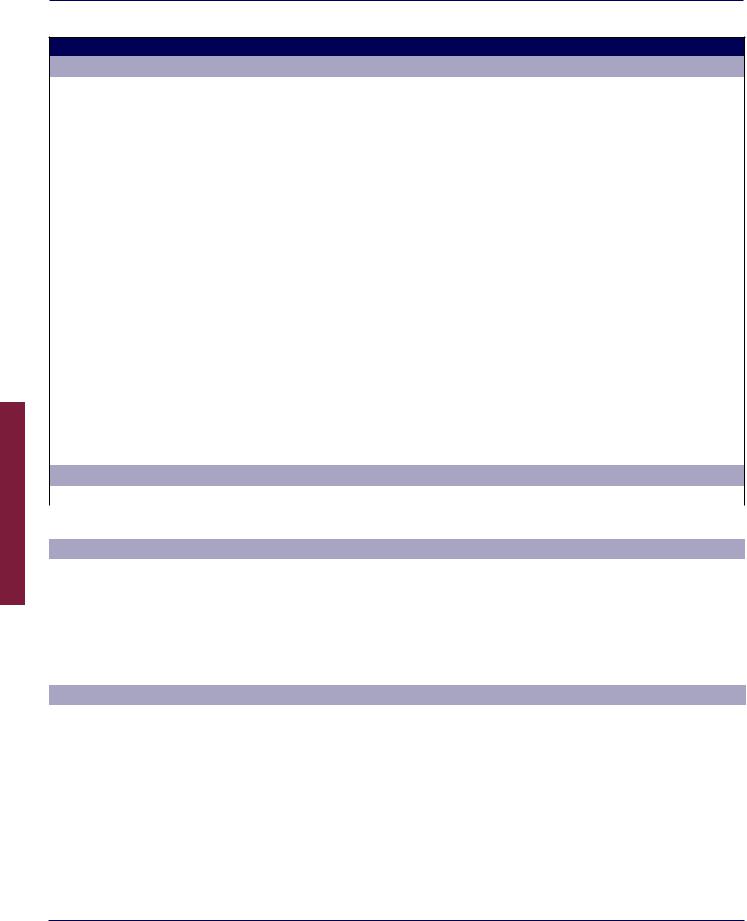
Build, Acquire and Implement
COBIT® 2019 FRAMEWORK: GOVERNANCE AND MANAGEMENT OBJECTIVES
C. Component: Information Flows and Items (see also Section 3.6)
Management Practice |
|
|
Inputs |
|
|
|
Outputs |
|
|
|||
|
|
|
|
|
|
|
|
|
|
|
|
|
DSS03.01 Identify and classify problems. |
From |
|
Description |
|
|
Description |
|
To |
|
|||
|
|
|
|
|
|
|
|
|
|
|
|
|
|
|
|
APO12.06 |
|
Risk-related root causes |
|
Problem classification |
|
DSS02.01 |
|
||
|
|
|
|
|
|
|
scheme |
|
|
|
||
|
|
|
DSS02.01 |
|
Criteria for problem |
|
Problem status reports |
|
DSS02.07 |
|
||
|
|
|
|
|
registration |
|
|
|
|
|
|
|
|
|
|
DSS02.04 |
|
Problem log |
|
Problem register |
|
Internal |
|
||
DSS03.02 Investigate and diagnose problems. |
APO12.06 |
|
Risk-related root causes |
|
Problem resolution reports |
|
DSS02.07 |
|
||||
|
|
|
|
|
|
|
|
|
|
|
|
|
|
|
|
|
|
|
|
Root causes of problems |
|
Internal; |
|
||
|
|
|
|
|
|
|
|
|
|
|
DSS03.05 |
|
DSS03.03 Raise known errors. |
|
|
APO12.06 |
|
Risk-related root causes |
|
Proposed solutions to |
|
BAI06.01 |
|
||
|
|
|
|
|
|
|
known errors |
|
|
|
||
|
|
|
DSS02.05 |
|
Incident resolutions |
|
Known error records |
|
DSS02.05 |
|
||
|
|
|
|
|
|
|
|
|
|
|
|
|
DSS03.04 Resolve and close problems. |
DSS02.05 |
|
Incident resolutions |
|
Communication of |
|
APO08.04; |
|
||||
|
|
|
|
|
|
|
knowledge learned |
|
DSS02.05 |
|
||
|
|
|
DSS02.06 |
|
Closed service requests |
|
Closed problem records |
|
DSS02.06 |
|
||
|
|
|
|
|
and incidents |
|
|
|
|
|
|
|
DSS03.05 Perform proactive problem management. |
APO12.06 |
|
Risk-related root causes |
|
Identified sustainable |
|
BAI06.01 |
|
||||
|
|
|
|
|
|
|
solutions |
|
|
|
||
|
|
|
DSS02.02 |
|
• Classified and |
|
Problem resolution |
|
DSS02.07, |
|
||
|
|
|
|
|
prioritized incidents |
|
monitoring reports |
|
MEA04.07 |
|
||
|
|
|
|
|
and service requests |
|
|
|
|
|
|
|
|
|
|
|
|
• Incident resolutions |
|
|
|
|
|
|
|
|
|
|
DSS03.04 |
|
Root causes of problems |
|
|
|
|
|
|
|
|
|
|
|
|
|
|
|
|
|
|
|
|
Related Guidance (Standards, Frameworks, Compliance Requirements) |
Detailed Reference |
|
|
|
|
|
|
|||||
|
|
|
|
|
|
|
|
|
|
|
|
|
No related guidance for this component |
|
|
|
|
|
|
|
|
|
|
||
|
|
|
|
|
|
|
|
|
|
|
|
|
D. Component: People, Skills and Competencies |
|
|
|
|
|
|
|
|
|
|
||
Skill |
Related Guidance (Standards, Frameworks, Compliance Requirements) |
|
|
Detailed Reference |
|
|||||||
Application support |
Skills Framework for the Information Age V6, 2015 |
|
|
ASUP |
|
|
||||||
|
|
|
|
|
|
|
|
|
||||
Network support |
Skills Framework for the Information Age V6, 2015 |
|
|
NTAS |
|
|
||||||
|
|
|
|
|
|
|
||||||
Problem management |
e-Competence Framework (e-CF)—A common European Framework for ICT |
C. Run—C.4. Problem |
|
|||||||||
|
Professionals in all industry sectors—Part 1: Framework, 2016 |
|
|
Management |
|
|
||||||
Problem management |
Skills Framework for the Information Age V6, 2015 |
|
|
PBMG |
|
|
||||||
|
|
|
|
|
|
|
|
|
|
|
|
|
E. Component: Policies and Procedures |
|
|
|
|
|
|
|
|
|
|
||
Relevant Policy |
|
Policy Description |
|
Related Guidance |
|
|
Detailed Reference |
|
||||
Problem resolution policy |
|
Documents rationale and provides |
ITIL V3, 2011 |
|
|
Service Operation, 3. Service |
|
|||||
|
|
guidance for addressing problems |
|
|
|
|
|
operation principles |
|
|
||
|
|
that result from incidents and |
|
|
|
|
|
|
|
|
|
|
|
|
identifying validated workarounds. |
|
|
|
|
|
|
|
|
|
|
246
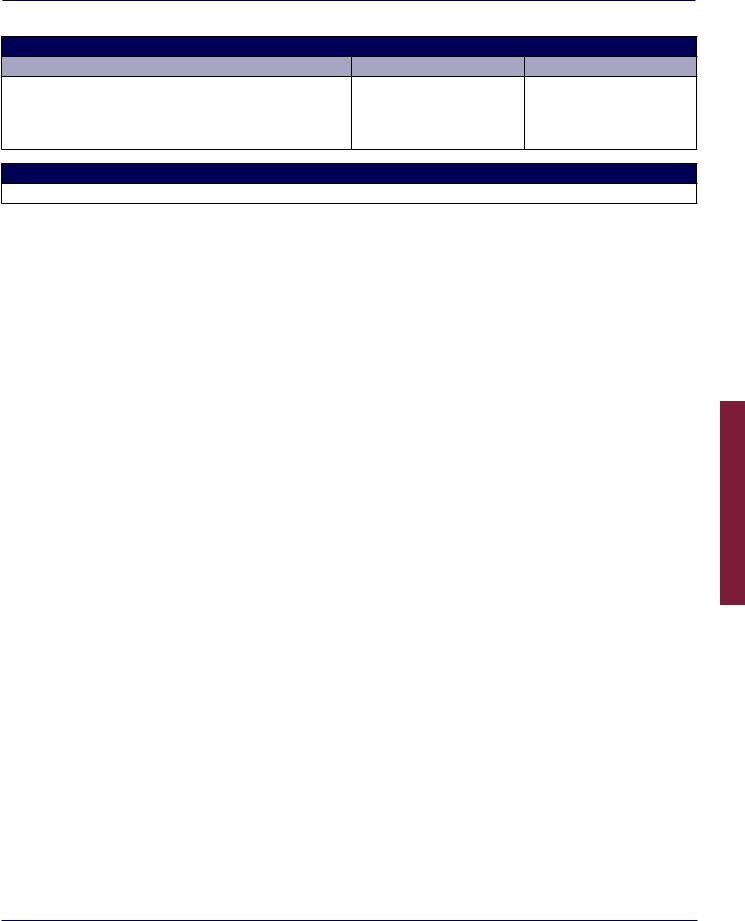
CHAPTER 4 COBIT GOVERNANCE AND MANAGEMENT OBJECTIVES—DETAILED GUIDANCE
F. Component: Culture, Ethics and Behavior
Key Culture Elements |
Related Guidance |
Detailed Reference |
Support a culture of proactive problem management (detection, action and prevention) with clearly defined roles and responsibilities. Ensure a transparent and open environment for reporting problems by providing independent reporting mechanisms and/or rewarding people who bring problems forward.
G. Component: Services, Infrastructure and Applications
Problem tracking/resolution system
Support and Service Deliver,
247

COBIT® 2019 FRAMEWORK: GOVERNANCE AND MANAGEMENT OBJECTIVES
Page intentionally left blank
Build, Acquire and Implement
248

CHAPTER 4 COBIT GOVERNANCE AND MANAGEMENT OBJECTIVES—DETAILED GUIDANCE
Domain: Deliver, Service and Support |
|
Management Objective: DSS04 - Managed Continuity |
Focus Area: COBIT Core Model |
Description |
|
Establish and maintain a plan to enable the business and IT organizations to respond to incidents and quickly adapt to disruptions. This will enable continued operations of critical business processes and required I&T services and maintain availability of resources, assets and information at a level acceptable to the enterprise.
Purpose
Adapt rapidly, continue business operations and maintain availability of resources and information at a level acceptable to the enterprise in the event of a significant disruption (e.g., threats, opportunities, demands).
The management objective supports the achievement of a set of primary enterprise and alignment goals:
Enterprise Goals |
Æ |
Alignment Goals |
||
• EG01 |
Portfolio of competitive products and services |
• AG05 Delivery of I&T services in line with business requirements |
||
|
||||
• EG02 |
Managed business risk |
|
• AG07 Security of information, processing infrastructure and |
|
• EG06 |
Business service continuity and availability |
|
applications, and privacy |
|
• EG08 |
Optimization of internal business process functionality |
|
|
|
Example Metrics for Enterprise Goals |
|
Example Metrics for Alignment Goals |
||
|
|
|
|
|
EG01 |
a. Percent of products and services that meet or exceed |
|
AG05 a. Percent of business stakeholders satisfied that I&T service |
|
|
targets in revenues and/or market share |
|
delivery meets agreed service levels |
|
|
b. Percent of products and services that meet or exceed |
|
b. Number of business disruptions due to I&T service incidents |
|
|
customer satisfaction targets |
|
c. Percent of users satisfied with the quality of I&T service |
|
|
c. Percent of products and services that provide competitive |
|
delivery |
|
|
advantage |
|
|
|
|
d. Time to market for new products and services |
|
|
|
EG02 |
a. Percent of critical business objectives and services |
|
AG07 a. Number of confidentiality incidents causing financial loss, |
|
|
covered by risk assessment |
|
business disruption or public embarrassment |
|
|
b. Ratio of significant incidents that were not identified in |
|
b. Number of availability incidents causing financial loss, |
|
|
risk assessments vs. total incidents |
|
business disruption or public embarrassment |
|
|
c. Frequency of updating risk profile |
|
c. Number of integrity incidents causing financial loss, |
|
|
|
|
business disruption or public embarrassment |
|
EG06 a. Number of customer service or business process |
|
|||
|
|
|||
|
interruptions causing significant incidents |
|
|
|
b.Business cost of incidents
c.Number of business processing hours lost due to unplanned service interruptions
d.Percent of complaints as a function of committed service availability targets
EG08 a. Satisfaction levels of board and executive management with business process capabilities
b.Satisfaction levels of customers with service delivery capabilities
c.Satisfaction levels of suppliers with supply chain capabilities
Support and Service Deliver,
249
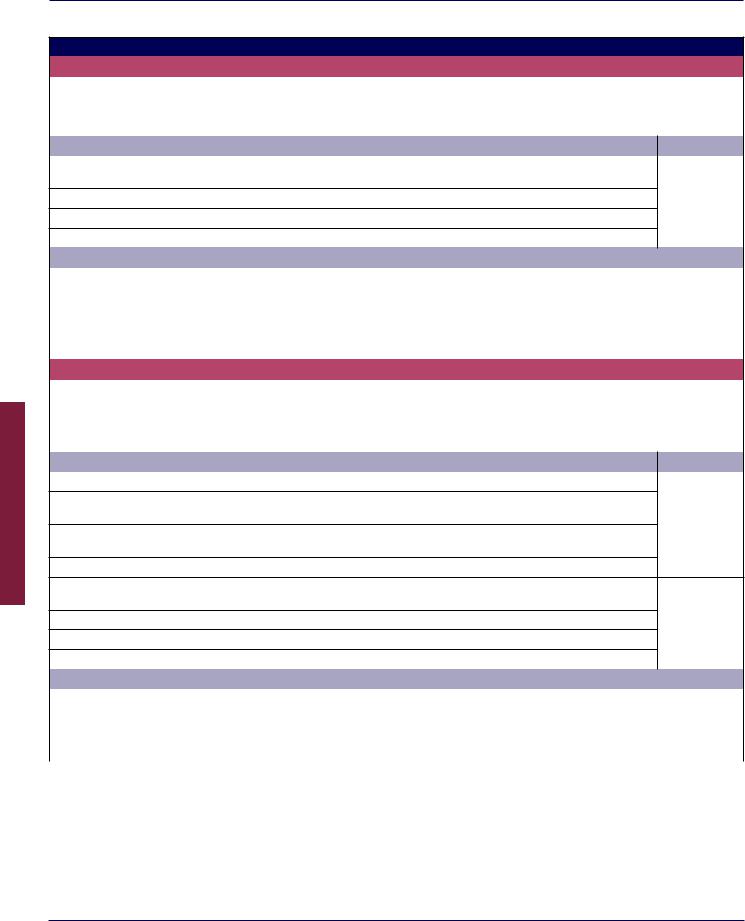
Build, Acquire and Implement
COBIT® 2019 FRAMEWORK: GOVERNANCE AND MANAGEMENT OBJECTIVES
A. Component: Process
Management Practice |
Example Metrics |
|
|
|
|
DSS04.01 Define the business continuity policy, objectives and scope. |
a. Percent of business continuity objectives and scope reworked due to |
|
Define business continuity policy and scope, aligned with enterprise and |
misidentified processes and activities |
|
stakeholder objectives, to improve business resilience. |
b. Percent of key stakeholders participating, defining and agreeing on |
|
|
continuity policy and scope |
|
Activities |
|
Capability Level |
1. Identify internal and outsourced business processes and service activities that are critical to the enterprise operations or |
2 |
|
necessary to meet legal and/or contractual obligations. |
|
|
2.Identify key stakeholders and roles and responsibilities for defining and agreeing on continuity policy and scope.
3.Define and document the agreed minimum policy objectives and scope for business resilience.
4.Identify essential supporting business processes and related I&T services.
Related Guidance (Standards, Frameworks, Compliance Requirements) |
Detailed Reference |
|
|
|
|
HITRUST CSF version 9, September 2017 |
12.01 Information Security Aspects of Business Continuity Management |
|
|
|
|
ISF, The Standard of Good Practice for Information Security 2016 |
BC1.1 Business Continuity Strategy; BC1.2 Business Continuity Programme |
|
ISO/IEC 27002:2013/Cor.2:2015(E) |
17. Information security aspects of business continuity management |
|
|
|
|
National Institute of Standards and Technology Special Publication |
3.6 Contingency planning (CP-1) |
|
800-53, Revision 5 (Draft), August 2017 |
|
|
Management Practice |
Example Metrics |
|
|
|
|
DSS04.02 Maintain business resilience. |
a. Total downtime resulting from major incident or disruption |
|
Evaluate business resilience options and choose a cost-effective and |
b. Percent of key stakeholders involved in business impact analyses |
|
viable strategy that will ensure enterprise continuity, disaster recovery |
evaluating the impact over time of a disruption to critical business |
|
and incident response in the face of a disaster or other major incident |
functions and the effect that a disruption would have on them |
|
or disruption. |
|
|
Activities |
Capability Level |
|
1. Identify potential scenarios likely to give rise to events that could cause significant disruptive incidents. |
2 |
|
2.Conduct a business impact analysis to evaluate the impact over time of a disruption to critical business functions and the effect that a disruption would have on them.
3.Establish the minimum time required to recover a business process and supporting I&T, based on an acceptable length of business interruption and maximum tolerable outage.
4.Determine the conditions and owners of key decisions that will cause the continuity plans to be invoked.
5. Assess the likelihood of threats that could cause loss of business continuity. Identify measures that will reduce the likelihood |
3 |
and impact through improved prevention and increased resilience. |
|
6.Analyze continuity requirements to identify possible strategic business and technical options.
7.Identify resource requirements and costs for each strategic technical option and make strategic recommendations.
8.Obtain executive business approval for selected strategic options.
Related Guidance (Standards, Frameworks, Compliance Requirements) |
Detailed Reference |
ISF, The Standard of Good Practice for Information Security 2016 |
BC1.3 Resilient Technical Environments |
|
|
ITIL V3, 2011 |
Service Design, 4.6 IT Continuity Management |
|
|
National Institute of Standards and Technology Special Publication |
3.6 Contingency planning (CP-2) |
800-53, Revision 5 (Draft), August 2017 |
|
250
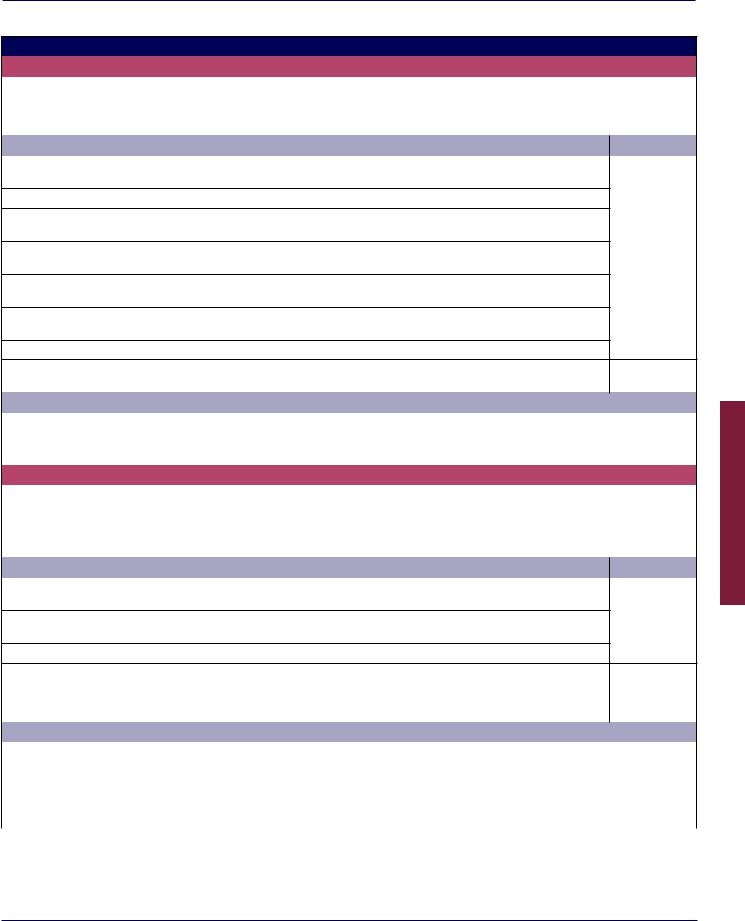
CHAPTER 4 COBIT GOVERNANCE AND MANAGEMENT OBJECTIVES—DETAILED GUIDANCE
A. Component: Process (cont.)
Management Practice |
Example Metrics |
|
|
|
|
DSS04.03 Develop and implement a business continuity response. |
a. Number of critical business systems not covered by the plan |
|
Develop a business continuity plan (BCP) and disaster recovery plan |
b. Percent of key stakeholders involved in developing BCPs and DRPs |
|
(DRP) based on the strategy. Document all procedures necessary for the |
|
|
enterprise to continue critical activities in the event of an incident. |
|
|
Activities |
|
Capability Level |
1. Define the incident response actions and communications to be taken in the event of disruption. Define related roles and |
2 |
|
responsibilities, including accountability for policy and implementation. |
|
|
2.Ensure that key suppliers and outsource partners have effective continuity plans in place. Obtain audited evidence as required.
3.Define the conditions and recovery procedures that would enable resumption of business processing. Include updating and reconciliation of information databases to preserve information integrity.
4.Develop and maintain operational BCPs and DRPs that contain the procedures to be followed to enable continued operation of critical business processes and/or temporary processing arrangements. Include links to plans of outsourced service providers.
5.Define and document the resources required to support the continuity and recovery procedures, considering people, facilities and IT infrastructure.
6.Define and document the information backup requirements required to support the plans. Include plans and paper documents as well as data files. Consider the need for security and off-site storage.
7.Determine required skills for individuals involved in executing the plan and procedures.
8. Distribute the plans and supporting documentation securely to appropriately authorized interested parties. Make sure the plans |
3 |
|
and documentation are accessible under all disaster scenarios. |
|
|
Related Guidance (Standards, Frameworks, Compliance Requirements) |
Detailed Reference |
|
ISF, The Standard of Good Practice for Information Security 2016 |
BC1.4 Crisis Management; BC2.1 Business Continuity Planning |
|
|
|
|
National Institute of Standards and Technology Special Publication |
3.6 Contingency planning (CP-6, CP-9, CP-10) |
|
800-53, Revision 5 (Draft), August 2017 |
|
|
Management Practice |
Example Metrics |
|
|
|
|
DSS04.04 Exercise, test and review the business continuity plan (BCP) |
a. Frequency of tests |
|
and disaster response plan (DRP). |
b. Number of exercises and tests that achieved recovery objectives |
|
Test continuity on a regular basis to exercise plans against |
|
|
predetermined outcomes, uphold business resilience and allow |
|
|
innovative solutions to be developed. |
|
|
Activities |
|
Capability Level |
1. Define objectives for exercising and testing the business, technical, logistical, administrative, procedural and operational |
2 |
|
systems of the plan to verify completeness of the BCP and DRP in meeting business risk. |
|
|
2.Define and agree on stakeholder exercises that are realistic and validate continuity procedures. Include roles and responsibilities and data retention arrangements that cause minimum disruption to business processes.
3.Assign roles and responsibilities for performing continuity plan exercises and tests.
4. |
Schedule exercises and test activities as defined in the continuity plans. |
|
3 |
|
|
|
|
5. |
Conduct a post-exercise debriefing and analysis to consider the achievement. |
4 |
|
6. |
Based on the results of the review, develop recommendations for improving the current continuity plans. |
5 |
|
|
|
|
|
Related Guidance (Standards, Frameworks, Compliance Requirements) |
Detailed Reference |
|
|
|
|
||
CMMI Cybermaturity Platform, 2018 |
PP.RS Develop and Maintain Response Plans; PP.RP Develop and |
||
|
|
Maintain Recovery Plans |
|
ISF, The Standard of Good Practice for Information Security 2016 |
BC2.3 Business Continuity Testing |
|
|
The CIS Critical Security Controls for Effective Cyber Defense Version |
CSC 20: Penetration Tests and Red Team Exercises |
|
|
6.1, August 2016 |
|
|
|
Support and Service Deliver,
251
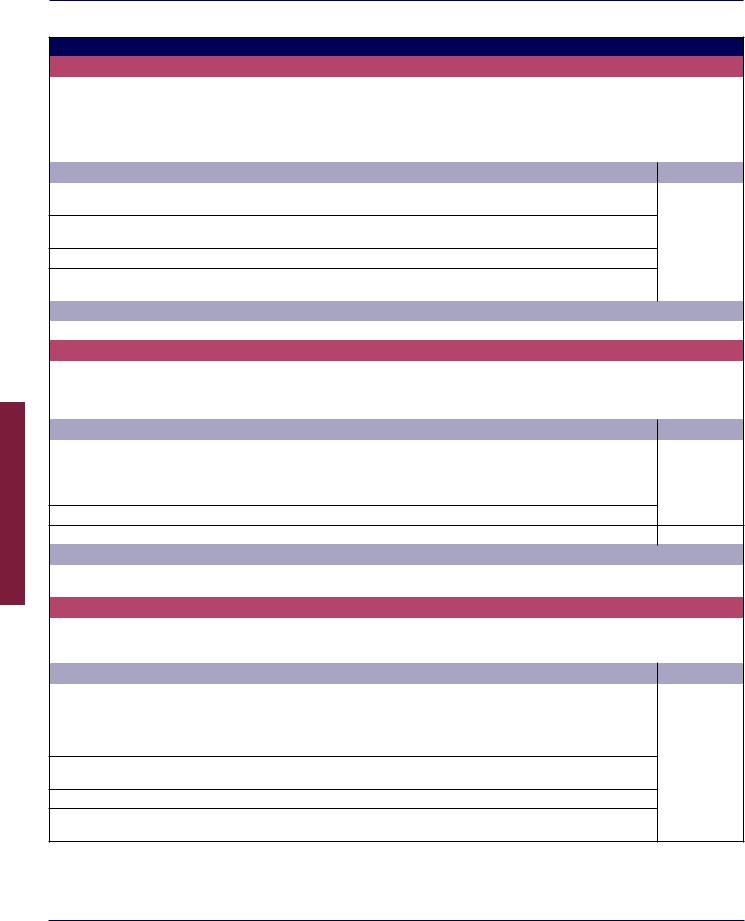
Build, Acquire and Implement
COBIT® 2019 FRAMEWORK: GOVERNANCE AND MANAGEMENT OBJECTIVES
A. Component: Process (cont.)
Management Practice |
Example Metrics |
|
|
|
|
DSS04.05 Review, maintain and improve the continuity plans. |
a. Percent of agreed improvements to the plan that have been reflected |
|
Conduct a management review of the continuity capability at regular |
in the plan |
|
intervals to ensure its continued suitability, adequacy and effectiveness. |
b. Percent of continuity plans and business impact assessments that are |
|
Manage changes to the plans in accordance with the change control |
up to date |
|
process to ensure that continuity plans are kept up to date and |
|
|
continually reflect actual business requirements. |
|
|
Activities |
|
Capability Level |
|
|
|
1. On a regular basis, review the continuity plans and capability against any assumptions made and current business operational |
3 |
|
and strategic objectives. |
|
|
2.On a regular basis, review the continuity plans to consider the impact of new or major changes to enterprise organization, business processes, outsourcing arrangements, technologies, infrastructure, operating systems and application systems.
3.Consider whether a revised business impact assessment may be required, depending on the nature of the change.
4.Recommend changes in policy, plans, procedures, infrastructure, and roles and responsibilities. Communicate them as appropriate for management approval and processing via the IT change management process.
Related Guidance (Standards, Frameworks, Compliance Requirements) |
Detailed Reference |
|
No related guidance for this management practice |
|
|
|
|
|
Management Practice |
Example Metrics |
|
|
|
|
DSS04.06 Conduct continuity plan training. |
a. Percent of internal and external stakeholders who received training |
|
Provide all concerned internal and external parties with regular training |
b. Percent of relevant internal and external parties whose skills and |
|
sessions regarding procedures and their roles and responsibilities in |
competencies are current |
|
case of disruption. |
|
|
Activities |
|
Capability Level |
|
|
|
1. Roll out BCP and DRP awareness and training. |
|
2 |
|
|
|
2. Define and maintain training requirements and plans for those performing continuity planning, impact assessments, risk |
3 |
|
assessments, media communication and incident response. Ensure that the training plans consider frequency of training and |
|
|
training delivery mechanisms. |
|
|
3. Develop competencies based on practical training, including participation in exercises and tests.
4. Based on the exercise and test results, monitor skills and competencies. |
|
4 |
|
Related Guidance (Standards, Frameworks, Compliance Requirements) |
|
Detailed Reference |
|
|
|
|
|
National Institute of Standards and Technology Special Publication |
|
3.6 Contingency planning (CP-4) |
|
800-53, Revision 5 (Draft), August 2017 |
|
|
|
Management Practice |
|
Example Metrics |
|
|
|
|
|
DSS04.07 Manage backup arrangements. |
|
a. Percent of backup media transferred and stored securely |
|
Maintain availability of business-critical information. |
|
b. Percent of successful and timely restoration from backup or alternate |
|
|
|
media copies |
|
Activities |
|
Capability Level |
|
|
|
||
1. Back up systems, applications, data and documentation according to a defined schedule. Consider frequency (monthly, |
2 |
||
weekly, daily, etc.), mode of backup (e.g., disk mirroring for real-time backups vs. DVD-ROM for long-term retention), type of |
|
||
backup (e.g., full vs. incremental), and type of media. Consider also automated online backups, data types (e.g., voice, optical), |
|
||
creation of logs, critical end-user computing data (e.g., spreadsheets), physical and logical location of data sources, security |
|
||
and access rights, and encryption. |
|
|
|
2.Define requirements for on-site and off-site storage of backup data that meet the business requirements. Consider the accessibility required to back up data.
3.Periodically test and refresh archived and backup data.
4.Ensure that systems, applications, data and documentation maintained or processed by third parties are adequately backed up or otherwise secured. Consider requiring return of backups from third parties. Consider escrow or deposit arrangements.
252

CHAPTER 4 COBIT GOVERNANCE AND MANAGEMENT OBJECTIVES—DETAILED GUIDANCE
A. Component: Process (cont.)
Related Guidance (Standards, Frameworks, Compliance Requirements) |
Detailed Reference |
|
|
CMMI Cybermaturity Platform, 2018 |
IP.BP Apply Backup Processes |
|
|
HITRUST CSF version 9, September 2017 |
09.05 Information Back-Up |
ISF, The Standard of Good Practice for Information Security 2016 |
SY2.3 Backup |
|
|
ISO/IEC 27002:2013/Cor.2:2015(E) |
12.3 Backup |
|
|
National Institute of Standards and Technology Special Publication |
3.6 Contingency planning (CP-3) |
800-53, Revision 5 (Draft), August 2017 |
|
The CIS Critical Security Controls for Effective Cyber Defense Version |
CSC 10: Data Recovery Capability |
6.1, August 2016 |
|
Management Practice |
Example Metrics |
DSS04.08 Conduct post-resumption review. |
a. Percent of issues identified and subsequently addressed in the plan |
Assess the adequacy of the business continuity plan (BCP) and disaster |
b. Percent of issues identified and subsequently addressed in training |
response plan (DRP) following successful resumption of business |
materials |
processes and services after a disruption. |
|
Activities |
Capability Level |
|
|
1. Assess adherence to the documented BCP and DRP. |
4 |
2.Determine the effectiveness of the plans, continuity capabilities, roles and responsibilities, skills and competencies, resilience to the incident, technical infrastructure, and organizational structures and relationships.
3. Identify weaknesses or omissions in the plans and capabilities and make recommendations for improvement. Obtain |
|
|
|
|
|
5 |
|
|
|||||||
management approval for any changes to the plans and apply via the enterprise change control process. |
|
|
|
|
|
|
|
|
|
|
|
|
|||
Related Guidance (Standards, Frameworks, Compliance Requirements) |
|
Detailed Reference |
|
|
|
|
|
|
|
|
|
|
|
|
|
|
|
|
|
|
|
|
|
|
|
|
|
|
|
|
|
No related guidance for this management practice |
|
|
|
|
|
|
|
|
|
|
|
|
|
|
|
|
|
|
|
|
|
|
|
|
|
|
|
|
|
|
|
|
|
|
|
|
|
|
|
|
|
|
|
|
|
|
|
B. Component: Organizational Structures |
|
|
|
|
|
|
|
|
|
|
|
|
|
|
|
Key Management Practice |
|
|
Executive Committee |
Chief Operating Officer |
Chief Information Officer |
Chief Technology Officer |
Chief Information Security Officer |
Business Process Owners |
Data Management Function |
Head Architect |
Head Development |
Head IT Operations |
Service Manager |
Information Security Manager |
Business Continuity Manager |
|
|
|
|
|
|
|
|
|
|
|
|
|
|
|
|
DSS04.01 Define the business continuity policy, objectives and scope. |
|
|
R |
A |
R |
|
R |
R |
|
|
|
R |
R |
|
R |
DSS04.02 Maintain business resilience. |
|
|
R |
A |
R |
|
|
R |
|
R |
|
R |
|
R |
R |
DSS04.03 Develop and implement a business continuity response. |
|
|
|
|
R |
R |
|
R |
|
|
|
R |
|
R |
A |
|
|
|
|
|
|
|
|
|
|
|
|
|
|
|
|
DSS04.04 Exercise, test and review the business continuity plan (BCP) and disaster response plan (DRP). |
|
|
R |
R |
|
R |
|
|
|
R |
|
R |
A |
||
DSS04.05 Review, maintain and improve the continuity plans. |
|
|
|
A |
R |
R |
R |
R |
|
|
|
R |
|
|
R |
DSS04.06 Conduct continuity plan training. |
|
|
|
|
R |
R |
|
R |
|
|
R |
R |
|
R |
A |
|
|
|
|
|
|
|
|
|
|
|
|
|
|
|
|
DSS04.07 Manage backup arrangements. |
|
|
|
|
|
A |
|
|
R |
|
|
R |
|
R |
R |
DSS04.08 Conduct post-resumption review. |
|
|
|
|
R |
R |
R |
R |
|
|
|
R |
|
|
A |
Related Guidance (Standards, Frameworks, Compliance Requirements) |
|
Detailed Reference |
|
|
|
|
|
|
|
|
|
|
|
|
|
|
|
|
|
|
|
|
|
|
|
|
|
|
|
|
|
No related guidance for this component |
|
|
|
|
|
|
|
|
|
|
|
|
|
|
|
Support and Service Deliver,
253

Build, Acquire and Implement
COBIT® 2019 FRAMEWORK: GOVERNANCE AND MANAGEMENT OBJECTIVES
C. Component: Information Flows and Items (see also Section 3.6)
Management Practice |
|
|
Inputs |
|
|
Outputs |
|
|
|
|
|
|
|
|
|
|
|
DSS04.01 Define the business continuity policy, |
From |
|
Description |
|
Description |
To |
||
objectives and scope. |
|
|
|
|
|
|
|
|
|
APO09.03 |
|
SLAs |
|
Policy and objectives for |
APO01.02 |
||
|
|
|
|
|||||
|
|
|
|
|
|
business continuity |
|
|
|
|
|
|
|
|
|
|
|
|
|
|
|
|
|
Assessments of current |
Internal |
|
|
|
|
|
|
|
continuity capabilities |
|
|
|
|
|
|
|
|
and gaps |
|
|
|
|
|
|
|
|
Disruptive incident |
Internal |
|
|
|
|
|
|
|
scenarios |
|
|
DSS04.02 Maintain business resilience. |
APO12.06 |
|
• Risk impact |
|
Approved strategic |
APO02.05 |
||
|
|
|
|
communication |
|
options |
|
|
|
|
|
|
• Risk-related root |
|
|
|
|
|
|
|
|
|
BIAs |
APO12.02 |
||
|
|
|
|
causes |
|
|||
|
|
|
|
|
|
|
|
|
|
|
|
|
|
Continuity requirements |
Internal |
||
|
|
|
|
|
|
|||
DSS04.03 Develop and implement a business continuity |
APO09.03 |
|
OLAs |
|
Incident response |
DSS02.01 |
||
response. |
|
|
|
|
|
actions and |
|
|
|
|
|
|
|
|
communications |
|
|
|
|
|
|
|
|
BCP |
Internal |
|
DSS04.04 Exercise, test and review the business |
|
|
|
|
Test results and |
Internal |
||
continuity plan (BCP) and disaster response |
|
|
|
|
recommendations |
|
||
plan (DRP). |
|
|
|
|
|
|
|
|
|
|
|
|
|
Test exercises |
Internal |
||
|
|
|
|
|
|
|||
|
|
|
|
|
|
|
|
|
|
|
|
|
|
|
Test objectives |
Internal |
|
|
|
|
|
|
|
|
|
|
DSS04.05 Review, maintain and improve the continuity |
|
|
|
|
Recommended changes |
Internal |
||
plans. |
|
|
|
|
|
to plans |
|
|
|
|
|
|
|
|
Results of reviews of |
Internal |
|
|
|
|
|
|
|
plans |
|
|
DSS04.06 Conduct continuity plan training. |
HR |
|
List of personnel |
|
Monitoring results of |
APO07.03 |
||
|
|
|
|
requiring training |
|
skills and competencies |
|
|
|
|
|
|
|
|
Training requirements |
APO07.03 |
|
DSS04.07 Manage backup arrangements. |
APO14.10 |
|
• Backup plan |
|
Test results of backup |
Internal |
||
|
|
|
|
• Backup test plan |
|
data |
|
|
|
|
|
|
|
|
Backup data |
Internal; |
|
|
|
|
|
|
|
|
|
APO14.08 |
DSS04.08 Conduct post-resumption review. |
|
|
|
|
Approved changes to the |
BAI06.01 |
||
|
|
|
|
|
|
plans |
|
|
|
|
|
|
|
|
Post-resumption review |
Internal |
|
|
|
|
|
|
|
report |
|
|
Related Guidance (Standards, Frameworks, Compliance Requirements) |
Detailed Reference |
|
|
|
||||
|
|
|
|
|
|
|
|
|
No related guidance for this component |
|
|
|
|
|
|
|
|
|
|
|
|
|
|
|
|
|
|
|
|
|
|
|
|
|
|
D. Component: People, Skills and Competencies |
|
|
|
|
|
|
|
|
Skill |
Related Guidance (Standards, Frameworks, Compliance Requirements) |
|
Detailed Reference |
|||||
|
|
|
|
|
||||
Continuity management |
Skills Framework for the Information Age V6, 2015 |
|
COPL |
|
||||
254
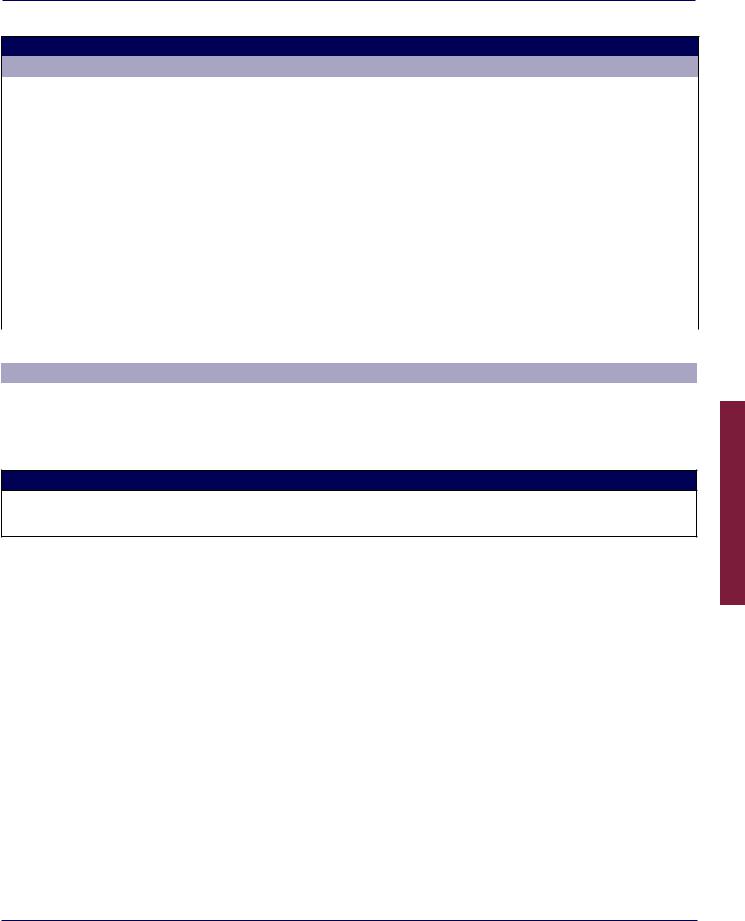
CHAPTER 4 COBIT GOVERNANCE AND MANAGEMENT OBJECTIVES—DETAILED GUIDANCE
E. Component: Policies and Procedures
Relevant Policy |
Policy Description |
Related Guidance |
Detailed Reference |
|
|
|
|
|
|
Business continuity policy |
Outlines management’s |
|
|
|
|
commitment to the business |
|
|
|
|
impact assessment (BIA), business |
|
|
|
|
contingency plan (including |
|
|
|
|
trusted recovery), recovery |
|
|
|
|
requirements for critical systems, |
|
|
|
|
defined thresholds and triggers |
|
|
|
|
for contingencies, escalation plan, |
|
|
|
|
data recovery plan, training and |
|
|
|
|
testing. |
|
|
|
Crisis management policy |
Sets guidelines and sequence of |
|
|
|
|
crisis response in key areas of risk. |
|
|
|
|
Along with I&T security, network |
|
|
|
|
management, and data security |
|
|
|
|
and privacy, crisis management |
|
|
|
|
is one of the operational-level |
|
|
|
|
policies that should be considered |
|
|
|
|
for complete I&T risk management. |
|
|
|
|
|
|
|
|
F. Component: Culture, Ethics and Behavior |
|
|
|
|
Key Culture Elements |
Related Guidance |
Detailed Reference |
|
|
|
|
|
|
|
Embed the need for business resilience in the enterprise culture. |
|
|
|
|
Regularly and frequently update employees about core values, desired |
|
|
|
|
behaviors and strategic objectives to maintain the enterprise’s composure |
|
|
|
|
and image in every situation. Regularly test business continuity |
|
|
|
|
procedures and disaster recovery. |
|
|
|
|
G. Component: Services, Infrastructure and Applications
•External hosting services
•Incident monitoring tools
•Remote storage facility services
Support and Service Deliver,
255

COBIT® 2019 FRAMEWORK: GOVERNANCE AND MANAGEMENT OBJECTIVES
Page intentionally left blank
Build, Acquire and Implement
256
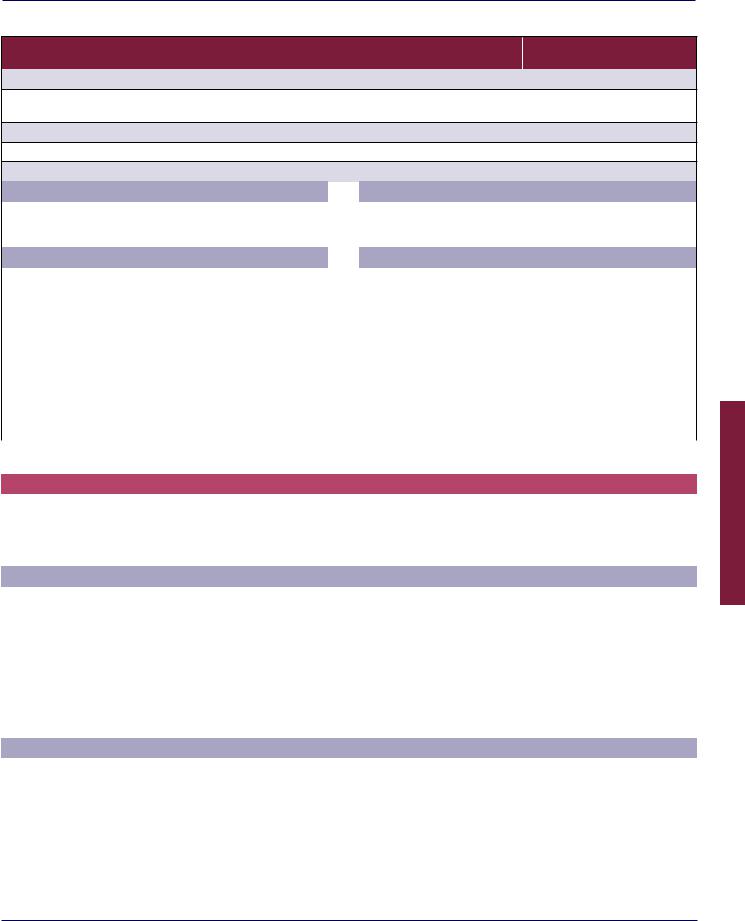
CHAPTER 4 COBIT GOVERNANCE AND MANAGEMENT OBJECTIVES—DETAILED GUIDANCE
Domain: Deliver, Service and Support |
|
Management Objective: DSS05 - Managed Security Services |
Focus Area: COBIT Core Model |
Description |
|
Protect enterprise information to maintain the level of information security risk acceptable to the enterprise in accordance with the security policy. Establish and maintain information security roles and access privileges. Perform security monitoring.
Purpose
Minimize the business impact of operational information security vulnerabilities and incidents.
The management objective supports the achievement of a set of primary enterprise and alignment goals:
Enterprise Goals |
|
Æ |
|
Alignment Goals |
|
||
• EG02 Managed business risk |
|
|
• AG02 Managed I&T-related risk |
|
|||
|
|
|
|
|
|||
• EG06 Business service continuity and availability |
|
|
|
|
• AG07 Security of information, processing infrastructure and |
||
|
|
|
|
|
applications, and privacy |
|
|
Example Metrics for Enterprise Goals |
|
|
|
|
Example Metrics for Alignment Goals |
|
|
|
|
|
|
|
|
|
|
EG02 a. Percent of critical business objectives and services covered |
|
|
|
|
AG02 a. Frequency of updating risk profile |
|
|
by risk assessment |
|
|
|
|
b. Percent of enterprise risk assessments including I&T- |
||
b. Ratio of significant incidents that were not identified in risk |
|
|
|
|
related risk |
|
|
assessments vs. total incidents |
|
|
|
|
c. Number of significant I&T-related incidents that were not |
||
c. Frequency of updating risk profile |
|
|
|
|
identified in a risk assessment |
|
|
EG06 a. Number of customer service or business process |
|
|
|
|
AG07 a. Number of confidentiality incidents causing financial loss, |
||
interruptions causing significant incidents |
|
|
|
|
business disruption or public embarrassment |
|
|
b. Business cost of incidents |
|
|
|
|
b. Number of availability incidents causing financial loss, |
||
c. Number of business processing hours lost due to |
|
|
|
|
business disruption or public embarrassment |
|
|
unplanned service interruptions |
|
|
|
|
c. Number of integrity incidents causing financial loss, |
||
d. Percent of complaints as a function of committed |
|
|
|
|
business disruption or public embarrassment |
|
|
service availability targets |
|
|
|
|
|
|
|
|
|
|
|
|
|
|
|
A. Component: Process |
|
|
|
|
|
|
|
Management Practice |
|
|
Example Metrics |
|
|||
|
|
|
|
|
|
||
DSS05.01 Protect against malicious software. |
|
|
a. Number of successful malicious software attacks |
|
|||
Implement and maintain preventive, detective and corrective measures |
|
|
b. Percent of employees failing tests on malicious attacks (e.g., test of |
||||
(especially up-to-date security patches and virus control) across the |
|
|
|
phishing email) |
|
||
enterprise to protect information systems and technology from malicious |
|
|
|
|
|
||
software (e.g., ransomware, malware, viruses, worms, spyware, spam). |
|
|
|
|
|
|
|
Activities |
|
|
|
|
Capability Level |
||
1. Install and activate malicious software protection tools on all processing facilities, with malicious software definition files that |
|
2 |
|||||
are updated as required (automatically or semi-automatically). |
|
|
|
|
|
|
|
2. Filter incoming traffic, such as email and downloads, to protect against unsolicited information (e.g., spyware, phishing emails). |
|
|
|||||
|
|
|
|||||
3. Communicate malicious software awareness and enforce prevention procedures and responsibilities. Conduct periodic training |
|
3 |
|||||
about malware in email and Internet usage. Train users to not open, but report, suspicious emails and to not install shared or |
|
|
|||||
unapproved software. |
|
|
|
|
|
|
|
4. Distribute all protection software centrally (version and patch-level) using centralized configuration and IT change management. |
|
|
|||||
|
|
|
|||||
5. Regularly review and evaluate information on new potential threats (e.g., reviewing vendors’ products and services security |
|
4 |
|||||
advisories). |
|
|
|
|
|
|
|
Related Guidance (Standards, Frameworks, Compliance Requirements) |
|
Detailed Reference |
|
||||
|
|
|
|
|
|||
CMMI Cybermaturity Platform, 2018 |
|
|
DP.DC Detect Malicious Code; RI.VT Vulnerability and Threat |
|
|||
|
|
|
|
Identification |
|
||
HITRUST CSF version 9, September 2017 |
|
|
09.04 Protection Against Malicious & Mobile Code |
|
|||
SF, The Standard of Good Practice for Information Security 2016 |
|
|
TS1 Security Solutions |
|
|||
|
|
|
|
|
|||
SO/IEC 27002:2013/Cor.2:2015(E) |
|
|
12.2 Protection against malware |
|
|||
|
|
|
|
||||
The CIS Critical Security Controls for Effective Cyber Defense Version |
|
|
CSC 4: Continuous Vulnerability Assessment and Remediation; CSC 8: |
||||
6.1, August 2016 |
|
|
Malware Defenses |
|
|||
Support and Service Deliver,
257
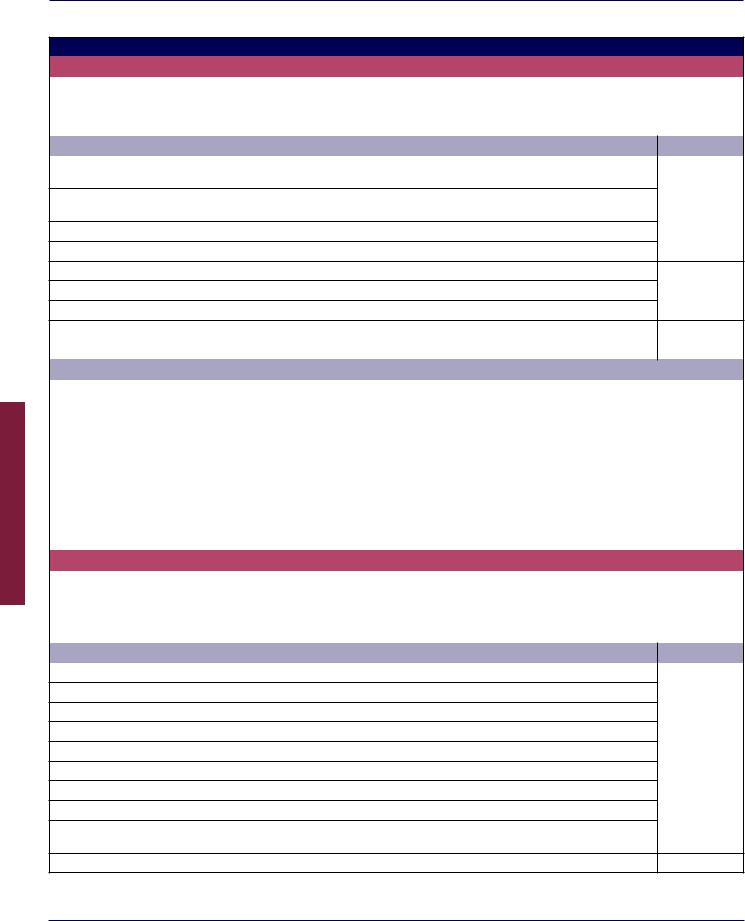
Build, Acquire and Implement
COBIT® 2019 FRAMEWORK: GOVERNANCE AND MANAGEMENT OBJECTIVES
A. Component: Process (cont.)
Management Practice |
Example Metrics |
|
|
|
|
DSS05.02 Manage network and connectivity security. |
a. Number of firewall breaches |
|
Use security measures and related management procedures to protect |
b. Number of vulnerabilities discovered |
|
information over all methods of connectivity. |
c. Percent of time network and systems not available due to security |
|
|
incident |
|
Activities |
|
Capability Level |
1. Allow only authorized devices to have access to corporate information and the enterprise network. Configure these devices to |
2 |
|
force password entry. |
|
|
2.Implement network filtering mechanisms, such as firewalls and intrusion detection software. Enforce appropriate policies to control inbound and outbound traffic.
3.Apply approved security protocols to network connectivity.
4.Configure network equipment in a secure manner.
5. Encrypt information in transit according to its classification. |
3 |
6.Based on risk assessments and business requirements, establish and maintain a policy for security of connectivity.
7.Establish trusted mechanisms to support the secure transmission and receipt of information.
8. Carry out periodic penetration testing to determine adequacy of network protection. |
4 |
|
9. Carry out periodic testing of system security to determine adequacy of system protection. |
|
|
|
|
|
Related Guidance (Standards, Frameworks, Compliance Requirements) |
Detailed Reference |
|
|
|
|
CMMI Cybermaturity Platform, 2018 |
AC.MI Manage Network Integrity & Segregation; CM.MN Monitor |
|
|
Networks; AC.CP Manage Communication Protections |
|
HITRUST CSF version 9, September 2017 |
01.04 Network Access Control |
|
ISF, The Standard of Good Practice for Information Security 2016 |
PA2.3 Mobile Device Connectivity; NC1.1 Network Device Configuration |
|
|
|
|
ISO/IEC 27002:2013/Cor.2:2015(E) |
13.1 Network security management |
|
|
|
|
National Institute of Standards and Technology Special Publication |
3.20 System and information integrity (SI-8) |
|
800-53, Revision 5 (Draft), August 2017 |
|
|
The CIS Critical Security Controls for Effective Cyber Defense Version |
CSC 9: Limitation and Control of Network Ports, Protocols, and Services; |
|
6.1, August 2016 |
CSC 11: Secure Configurations for Network Devices such as Firewalls, |
|
|
Routers, and Switches |
|
Management Practice |
Example Metrics |
|
|
|
|
DSS05.03 Manage endpoint security. |
a. Number of incidents involving endpoint devices |
|
Ensure that endpoints (e.g., laptop, desktop, server, and other mobile |
b. Number of unauthorized devices detected on the network or in the |
|
and network devices or software) are secured at a level that is equal to |
end-user environment |
|
or greater than the defined security requirements for the information |
c. Percent of individuals receiving awareness training relating to use of |
|
processed, stored or transmitted. |
endpoint devices |
|
Activities |
|
Capability Level |
1. Configure operating systems in a secure manner. |
|
2 |
2.Implement device lockdown mechanisms.
3.Manage remote access and control (e.g., mobile devices, teleworking).
4.Manage network configuration in a secure manner.
5.Implement network traffic filtering on endpoint devices.
6.Protect system integrity.
7.Provide physical protection of endpoint devices.
8.Dispose of endpoint devices securely.
9.Manage malicious access through email and web browsers. For example, block certain websites and deactivate click-through on links for smartphones.
10. Encrypt information in storage according to its classification. |
3 |
258
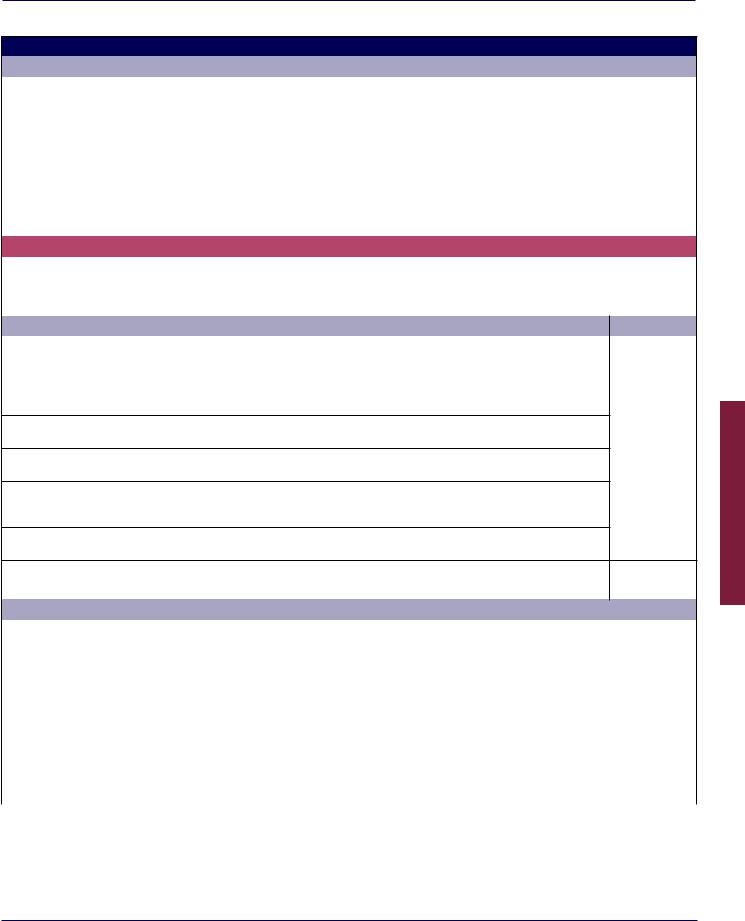
CHAPTER 4 COBIT GOVERNANCE AND MANAGEMENT OBJECTIVES—DETAILED GUIDANCE
A. Component: Process (cont.)
Related Guidance (Standards, Frameworks, Compliance Requirements) |
Detailed Reference |
|
|
|
|
CMMI Cybermaturity Platform, 2018 |
IP.MM Apply Mobile Device Management; TP.MP Apply Media Protection; |
|
|
DP.DP Detect Mobile Code and Browser Protection |
|
ISF, The Standard of Good Practice for Information Security 2016 |
PM1.3 Remote Working; PA2.1 Mobile Device Configuration; PA2.4 |
|
|
Employee-owned Devices; PA2.5 Portable Storage Devices; NC1.6 |
|
|
Remote Maintenance |
|
National Institute of Standards and Technology Special Publication |
3.4 Assessment, authorization and monitoring (CA-8, CA-9); 3.19 System |
|
800-53, Revision 5 (Draft), August 2017 |
and communications protection (SC-10) |
|
|
|
|
The CIS Critical Security Controls for Effective Cyber Defense Version |
CSC 3: Secure Configurations for Hardware and Software on Mobile |
|
6.1, August 2016 |
Devices, Laptops, Workstations, and Servers; CSC 7: Email and Web |
|
|
Browser Protections |
|
Management Practice |
Example Metrics |
|
DSS05.04 Manage user identity and logical access. |
a. Average time between change and update of accounts |
|
Ensure that all users have information access rights in accordance with |
b. Number of accounts (vs. number of authorized users/staff) |
|
business requirements. Coordinate with business units that manage their |
c. Number of incidents relating to unauthorized access to information |
|
own access rights within business processes. |
|
|
Activities |
|
Capability Level |
|
|
|
1. Maintain user access rights in accordance with business function, process requirements and security policies. Align the |
2 |
|
management of identities and access rights to the defined roles and responsibilities, based on least-privilege, need-to-have and |
|
|
need-to-know principles. |
|
|
2. Administer all changes to access rights (creation, modifications and deletions) in a timely manner based only on approved and |
3 |
|
documented transactions authorized by designated management individuals. |
|
|
3.Segregate, reduce to the minimum number necessary and actively manage privileged user accounts. Ensure monitoring on all activity on these accounts.
4.Uniquely identify all information processing activities by functional roles. Coordinate with business units to ensure that all roles are consistently defined, including roles that are defined by the business itself within business process applications.
5.Authenticate all access to information assets based on the individual’s role or business rules. Coordinate with business units that manage authentication within applications used in business processes to ensure that authentication controls have been properly administered.
6.Ensure that all users (internal, external and temporary) and their activity on IT systems (business application, IT infrastructure, system operations, development and maintenance) are uniquely identifiable.
7. Maintain an audit trail of access to information depending upon its sensitivity and regulatory requirements. |
4 |
||
|
|
|
|
8. Perform regular management review of all accounts and related privileges. |
|
||
|
|
|
|
Related Guidance (Standards, Frameworks, Compliance Requirements) |
Detailed Reference |
|
|
HITRUST CSF version 9, September 2017 |
10.03 Cryptographic Controls |
|
|
|
|
|
|
ISF, The Standard of Good Practice for Information Security 2016 |
PM1.1 Employment Life Cycle; SA1 Access Management |
|
|
|
|
|
|
ISO/IEC 27002:2013/Cor.2:2015(E) |
7.3 Termination and change of employment; 9. Access control |
|
|
ITIL V3, 2011 |
Service Operation, 4.5 Access Management |
|
|
|
|
|
|
National Institute of Standards and Technology Special Publication |
3.1 Access control (AC-11, AC-12); 3.11 Media protection |
|
|
800-53, Revision 5 (Draft), August 2017 |
(MP-2, MP-4, MP-7); 3.13 Physical and environmental protection |
|
|
|
(PE-2, PE-3, PE-6) |
|
|
The CIS Critical Security Controls for Effective Cyber Defense Version |
CSC 1: Inventory of Authorized and Unauthorized Devices; CSC 2: |
||
6.1, August 2016 |
Inventory of Authorized and Unauthorized Software; CSC 5: Controlled |
||
|
Use of Administrative Privileges; CSC 16: Account Monitoring and |
||
|
Control |
|
|
Support and Service Deliver,
259

Build, Acquire and Implement
COBIT® 2019 FRAMEWORK: GOVERNANCE AND MANAGEMENT OBJECTIVES
A. Component: Process (cont.)
Management Practice |
Example Metrics |
|
|
|
|
DSS05.05 Manage physical access to I&T assets. |
a. Average rating for physical security assessments |
|
Define and implement procedures (including emergency procedures) |
b. Number of physical information security-related incidents |
|
to grant, limit and revoke access to premises, buildings and areas, |
|
|
according to business need. Access to premises, buildings and areas |
|
|
should be justified, authorized, logged and monitored. This requirement |
|
|
applies to all persons entering the premises, including staff, temporary |
|
|
staff, clients, vendors, visitors or any other third party. |
|
|
Activities |
|
Capability Level |
1. Log and monitor all entry points to IT sites. Register all visitors, including contractors and vendors, to the site. |
2 |
|
2.Ensure all personnel display properly approved identification at all times.
3.Require visitors to be escorted at all times while on-site.
4.Restrict and monitor access to sensitive IT sites by establishing perimeter restrictions, such as fences, walls and security devices on interior and exterior doors.
5. Manage requests to allow appropriately authorized access to the computing facilities. |
3 |
6.Ensure that access profiles remain current. Base access to IT sites (server rooms, buildings, areas or zones) on job function and responsibilities.
7.Conduct regular physical information security awareness training.
Related Guidance (Standards, Frameworks, Compliance Requirements) |
Detailed Reference |
|
|
CMMI Cybermaturity Platform, 2018 |
AC.MA Manage Access; ID.DI Determine Impacts |
|
|
|
|
||
HITRUST CSF version 9, September 2017 |
01.01 Business Requirement for Access Control; 01.02 Authorized |
||
|
|
Access to Information Systems; 02.0 Human Resources Security |
|
|
|
|
|
ISF, The Standard of Good Practice for Information Security 2016 |
NC1.2 Physical Network Management |
|
|
ISO/IEC 27002:2013/Cor.2:2015(E) |
11. Physical and environmental security |
|
|
|
|
|
|
Management Practice |
Example Metrics |
|
|
DSS05.06 Manage sensitive documents and output devices. |
a. Number of stolen output devices |
|
|
Establish appropriate physical safeguards, accounting practices and |
b. Percent of sensitive documents and output devices identified |
||
inventory management regarding sensitive I&T assets, such as special |
in inventory |
|
|
forms, negotiable instruments, special-purpose printers or security tokens. |
|
|
|
Activities |
|
Capability Level |
|
|
|
|
|
1. |
Establish procedures to govern the receipt, use, removal and disposal of sensitive documents and output devices into, within, |
2 |
|
|
and outside of the enterprise. |
|
|
2. |
Ensure cryptographic controls are in place to protect sensitive electronically stored information. |
|
|
3. |
Assign access privileges to sensitive documents and output devices based on the least-privilege principle, balancing risk and |
3 |
|
|
business requirements. |
|
|
4. |
Establish an inventory of sensitive documents and output devices, and conduct regular reconciliations. |
|
|
5. |
Establish appropriate physical safeguards over sensitive documents. |
|
|
|
|
|
|
260
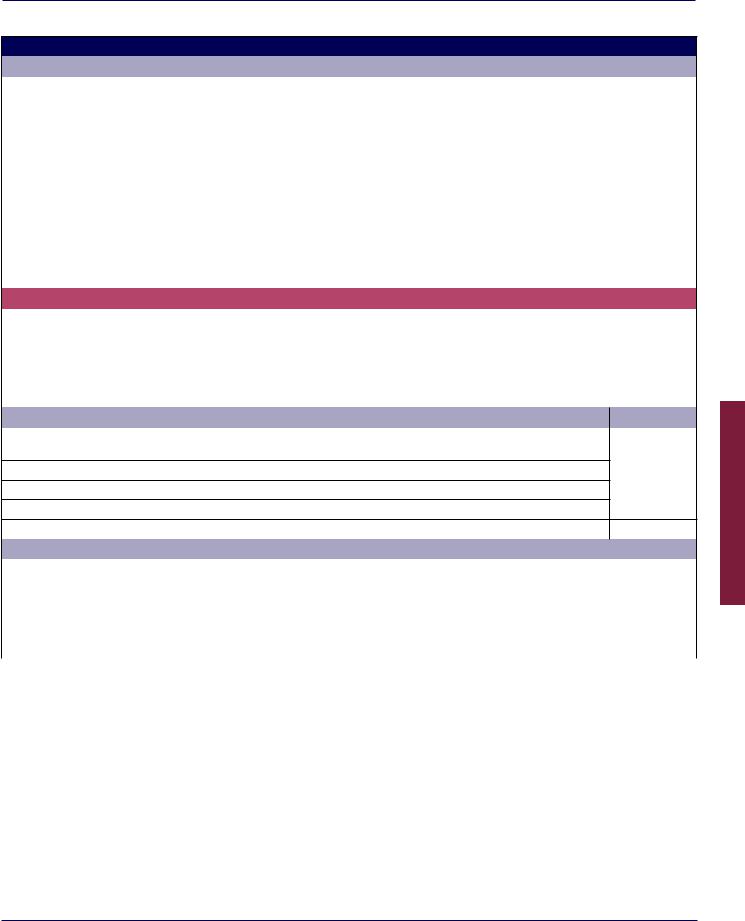
CHAPTER 4 COBIT GOVERNANCE AND MANAGEMENT OBJECTIVES—DETAILED GUIDANCE
A. Component: Process (cont.)
Related Guidance (Standards, Frameworks, Compliance Requirements) |
Detailed Reference |
|
|
|
|
CMMI Cybermaturity Platform, 2018 |
CM.Ph Monitor Physical |
|
|
|
|
HITRUST CSF version 9, September 2017 |
01.06 Application & Information Access Control; 01.07 Mobile |
|
|
Computing & Teleworking; 08.0 Physical & Environmental Security; 10.03 |
|
|
Cryptographic Controls; 10.04 Security of System Files |
|
ISF, The Standard of Good Practice for Information Security 2016 |
IR2.3 Business Impact Assessment - Confidentiality Requirements; IR2.4 |
|
|
Business Impact Assessment - Integrity Requirements; IR2.5 Business |
|
|
Impact Assessment - Availability Requirements; IM2.2 Sensitive Physical |
|
|
Information; PA2.2 Enterprise Mobility Man |
|
ISO/IEC 27002:2013/Cor.2:2015(E) |
10. Cryptography |
|
|
|
|
National Institute of Standards and Technology Special Publication |
3.1 Access control (AC-2, AC-3, AC-4, AC-5, AC-6, AC-13, AC-24); 3.7 |
|
800-53, Revision 5 (Draft), August 2017 |
Identification and authentication (IA-2, IA-10, IA-11) |
|
The CIS Critical Security Controls for Effective Cyber Defense Version |
CSC 15: Wireless Access Control |
|
6.1, August 2016 |
|
|
Management Practice |
Example Metrics |
|
DSS05.07 Manage vulnerabilities and monitor the infrastructure for |
a. Number of vulnerability tests carried out on perimeter devices |
|
security-related events. |
b. Number of vulnerabilities discovered during testing |
|
Using a portfolio of tools and technologies (e.g., intrusion detection |
c. Time taken to remediate any vulnerabilities |
|
tools), manage vulnerabilities and monitor the infrastructure for |
d. Percent of tickets created in a timely manner when monitoring |
|
unauthorized access. Ensure that security tools, technologies and |
systems identify potential security incidents |
|
detection are integrated with general event monitoring and incident |
|
|
management. |
|
|
Activities |
Capability Level |
|
1. Continually use a portfolio of supported technologies, services and assets (e.g., vulnerability scanners, fuzzers and sniffers, |
2 |
|
protocol analyzers) to identify information security vulnerabilities. |
|
|
2.Define and communicate risk scenarios, so they can be easily recognized, and the likelihood and impact understood.
3.Regularly review the event logs for potential incidents.
4.Ensure that security--related incident tickets are created in a timely manner when monitoring identifies potential incidents.
5. Log security-related events and retain records for appropriate period. |
3 |
Related Guidance (Standards, Frameworks, Compliance Requirements) |
Detailed Reference |
|
|
ISF, The Standard of Good Practice for Information Security 2016 |
IR2.6 Threat Profiling |
National Institute of Standards and Technology Special Publication |
3.7 Identification and authentication (IA-3); 3.11 Media protection |
800-53, Revision 5 (Draft), August 2017 |
(MP-1); 3.13 Physical and environmental protection (PE-5); |
|
3.19 System and communications protection (SC-15) |
The CIS Critical Security Controls for Effective Cyber Defense Version |
Maintenance, Monitoring, and Analysis of Audit Logs |
6.1, August 2016 |
|
Support and Service Deliver,
261

Build, Acquire and Implement
COBIT® 2019 FRAMEWORK: GOVERNANCE AND MANAGEMENT OBJECTIVES
B. Component: Organizational Structures
Key Management Practice |
|
|
|
|
Chief Information Officer |
Chief Information Security Officer |
Business Process Owners |
Head Human Resources |
Head Development |
Head IT Operations |
Information Security Manager |
Privacy Officer |
|
|
|
|
|
|
|
|
|
|
|
|
|
|
|
DSS05.01 Protect against malicious software. |
|
|
|
|
|
A |
R |
R |
R |
R |
R |
|
|
DSS05.02 Manage network and connectivity security. |
|
|
|
|
|
A |
|
|
R |
R |
R |
|
|
|
|
|
|
|
|
|
|
|
|
|
|
|
|
DSS05.03 Manage endpoint security. |
|
|
|
|
|
A |
|
|
R |
R |
R |
|
|
|
|
|
|
|
|
|
|
|
|
|
|
|
|
DSS05.04 Manage user identity and logical access. |
|
|
|
|
|
A |
R |
|
|
R |
R |
R |
|
DSS05.05 Manage physical access to I&T assets. |
|
|
|
|
|
A |
|
|
|
R |
R |
R |
|
|
|
|
|
|
|
|
|
|
|
|
|
|
|
DSS05.06 Manage sensitive documents and output devices. |
|
|
|
|
A |
|
|
|
|
R |
|
R |
|
|
|
|
|
|
|
|
|
|
|
|
|
|
|
DSS05.07 Manage vulnerabilities and monitor the infrastructure for security-related events. |
|
|
A |
|
|
|
R |
R |
R |
||||
Related Guidance (Standards, Frameworks, Compliance Requirements) |
Detailed Reference |
|
|
|
|
|
|
|
|
|
|||
|
|
|
|
|
|
|
|
|
|
|
|
|
|
No related guidance for this component |
|
|
|
|
|
|
|
|
|
|
|
|
|
|
|
|
|
|
|
|
|
|
|
|
|
|
|
|
|
|
|
|
|
|
|
|
|
|
|
|
|
C. Component: Information Flows and Items (see also Section 3.6) |
|
|
|
|
|
|
|
|
|
|
|
||
Management Practice |
|
|
|
Inputs |
|
Outputs |
|
|
|
|
|
||
|
|
|
|
|
|
|
|
|
|
|
|
||
DSS05.01 Protect against malicious software. |
|
From |
|
Description |
Description |
|
|
|
To |
|
|
||
|
|
|
|
|
Malicious software |
|
APO01.02 |
|
|||||
|
|
|
|
|
prevention policy |
|
|
|
|
|
|
||
|
|
|
|
|
Evaluations of potential |
APO12.02; |
|
||||||
|
|
|
|
|
threats |
|
APO12.03 |
|
|||||
DSS05.02 Manage network and connectivity security. |
|
APO01.07 |
|
Data classification |
Connectivity security |
|
APO01.02 |
|
|||||
|
|
|
|
guidelines |
policy |
|
|
|
|
|
|
||
|
|
APO09.03 |
|
SLAs |
Results of penetration |
|
MEA04.07 |
|
|||||
|
|
|
|
|
tests |
|
|
|
|
|
|
||
DSS05.03 Manage endpoint security. |
|
APO03.02 |
|
Information architecture |
Security policies for |
|
APO01.02 |
|
|||||
|
|
|
|
model |
endpoint devices |
|
|
|
|
|
|
||
|
|
APO09.03 |
|
• SLAs |
|
|
|
|
|
|
|
|
|
|
|
|
|
• OLAs |
|
|
|
|
|
|
|
|
|
|
|
BAI09.01 |
|
Results of physical |
|
|
|
|
|
|
|
|
|
|
|
|
|
inventory checks |
|
|
|
|
|
|
|
|
|
|
|
DSS06.06 |
|
Reports of violations |
|
|
|
|
|
|
|
|
|
|
|
|
|
|
|
|
|
|
|
||||
DSS05.04 Manage user identity and logical access. |
|
APO01.05 |
|
Definition of I&T-related |
Results of reviews of |
|
Internal |
|
|
||||
|
|
|
|
roles and responsibilities |
user accounts and |
|
|
|
|
|
|
||
|
|
|
|
|
privileges |
|
|
|
|
|
|
||
|
|
APO03.02 |
|
Information architecture |
Approved user access |
|
Internal |
|
|
||||
|
|
|
|
model |
rights |
|
|
|
|
|
|
||
262
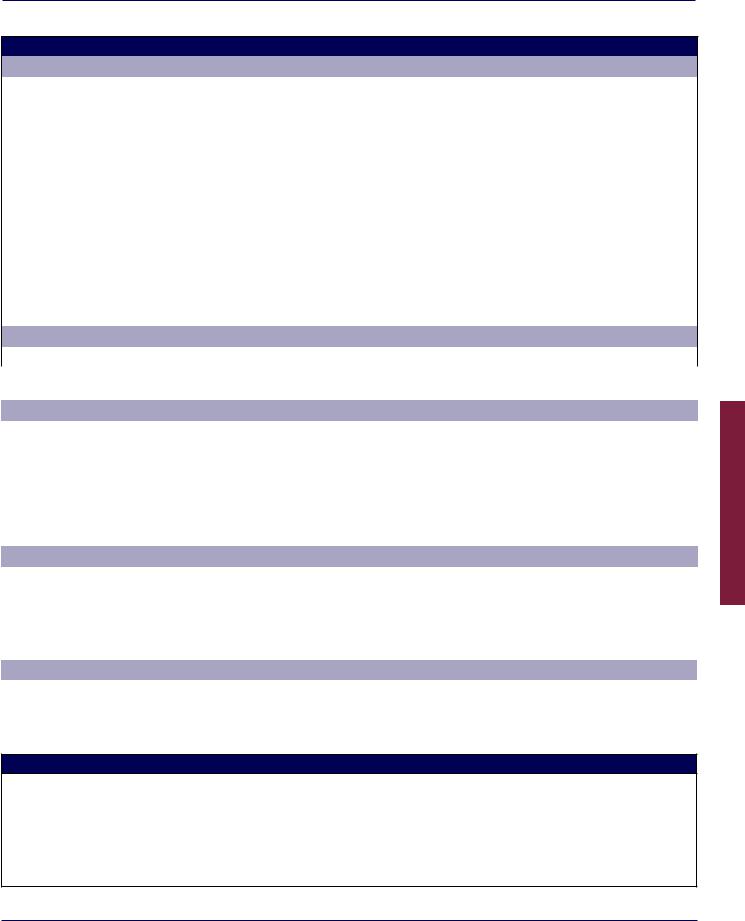
CHAPTER 4 COBIT GOVERNANCE AND MANAGEMENT OBJECTIVES—DETAILED GUIDANCE
C. Component: Information Flows and Items (see also Section 3.6) (cont.)
Management Practice |
|
|
Inputs |
|
|
|
Outputs |
|
||
|
|
|
|
|
|
|
|
|
|
|
DSS05.05 Manage physical access to I&T assets. |
From |
|
Description |
|
|
Description |
To |
|||
|
|
|
|
|
|
|
|
|
|
|
|
|
|
|
|
|
|
Access logs |
DSS06.03, |
||
|
|
|
|
|
|
|
|
|
|
MEA04.07 |
|
|
|
|
|
|
|
Approved access |
Internal |
||
|
|
|
|
|
|
|
requests |
|
||
DSS05.06 Manage sensitive documents and output |
APO03.02 |
|
Information architecture |
|
Access privileges |
Internal |
||||
devices. |
|
|
|
|
model |
|
|
|
|
|
|
|
|
|
|
Inventory of sensitive |
Internal |
||||
|
|
|
|
|
|
|
||||
|
|
|
|
|
|
|
documents and devices |
|
||
|
|
|
|
|
|
|
|
|
|
|
DSS05.07 Manage vulnerabilities and monitor the |
|
|
|
|
Security incident tickets |
DSS02.02 |
||||
infrastructure for security-related events. |
|
|
|
|
|
|
|
|
||
|
|
|
|
|
|
|
|
|
|
|
|
|
|
|
|
|
|
Security incident |
Internal |
||
|
|
|
|
|
|
|
characteristics |
|
||
|
|
|
|
|
|
|
Security event logs |
Internal |
||
|
|
|
|
|
|
|
|
|
|
|
Related Guidance (Standards, Frameworks, Compliance Requirements) |
Detailed Reference |
|
|
|
|
|||||
No related guidance for this component |
|
|
|
|
|
|
|
|
||
|
|
|
|
|
|
|
|
|
|
|
|
|
|
|
|
|
|
|
|
|
|
D. Component: People, Skills and Competencies |
|
|
|
|
|
|
|
|
||
Skill |
Related Guidance (Standards, Frameworks, Compliance Requirements) |
|
|
Detailed Reference |
||||||
|
|
|
|
|
|
|
|
|||
Information security |
Skills Framework for the Information Age V6, 2015 |
|
|
SCTY |
|
|||||
|
|
|
|
|
|
|||||
Information security management |
e-Competence Framework (e-CF)—A common European Framework for ICT |
E. Manage— E.8. Information |
||||||||
|
Professionals in all industry sectors—Part 1: Framework, 2016 |
|
|
Security Management |
||||||
Penetration testing |
Skills Framework for the Information Age V6, 2015 |
|
|
PENT |
|
|||||
Security administration |
Skills Framework for the Information Age V6, 2015 |
|
|
SCAD |
|
|||||
|
|
|
|
|
|
|
|
|
|
|
|
|
|
|
|
|
|
|
|
|
|
E. Component: Policies and Procedures |
|
|
|
|
|
|
|
|
||
Relevant Policy |
|
Policy Description |
|
Related Guidance |
|
|
Detailed Reference |
|||
|
|
|
|
|
|
|
|
|
|
|
Information security policy |
|
Sets guidelines to protect |
|
|
|
|
|
|
|
|
|
|
corporate information and |
|
|
|
|
|
|
|
|
|
|
associated systems and |
|
|
|
|
|
|
|
|
|
|
infrastructure. |
|
|
|
|
|
|
|
|
|
|
|
|
|
|
|
|
|
||
F. Component: Culture, Ethics and Behavior |
|
|
|
|
|
|
|
|
||
Key Culture Elements |
|
|
Related Guidance |
|
|
Detailed Reference |
||||
|
|
|
|
|
||||||
Create a culture of awareness regarding user responsibility to maintain |
1) HITRUST CSF version 9, |
|
|
(1) 01.03 User Responsibilities; |
||||||
security and privacy practices. |
|
|
|
September 2017; (2) ISF, The |
|
|
(2) PM2.1 Security Awareness |
|||
|
|
|
|
Standard of Good Practice for |
|
|
Program |
|
||
|
|
|
|
Information Security 2016 |
|
|
|
|
||
G. Component: Services, Infrastructure and Applications
•Directory services
•Email filtering systems
•Identity and access management system
•Security awareness services
•Security information and event management (SIEM) tools
•Security operations center (SOC) services
•Third-party security assessment services
•URL filtering systems
Support and Service Deliver,
263

COBIT® 2019 FRAMEWORK: GOVERNANCE AND MANAGEMENT OBJECTIVES
Page intentionally left blank
Build, Acquire and Implement
264
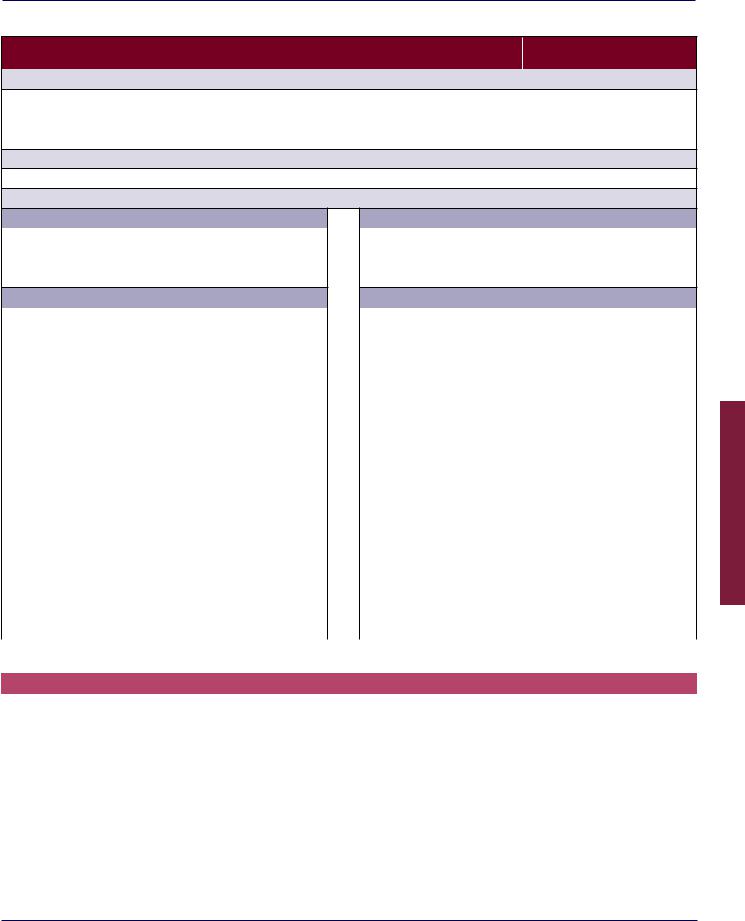
CHAPTER 4 COBIT GOVERNANCE AND MANAGEMENT OBJECTIVES—DETAILED GUIDANCE
Domain: Deliver, Service and Support |
|
Management Objective: DSS06 - Managed Business Process Controls |
Focus Area: COBIT Core Model |
Description |
|
Define and maintain appropriate business process controls to ensure that information related to and processed by in-house or outsourced business processes satisfies all relevant information control requirements. Identify the relevant information control requirements. Manage and operate adequate input, throughput and output controls (application controls) to ensure that information and information processing satisfy these requirements.
Purpose
Maintain information integrity and the security of information assets handled within business processes in the enterprise or its outsourced operation.
The management objective supports the achievement of a set of primary enterprise and alignment goals:
Enterprise Goals |
Æ |
Alignment Goals |
||
• EG01 |
Portfolio of competitive products and services |
AG08 Enabling and supporting business processes by integrating |
||
|
||||
• EG05 |
Customer-oriented service culture |
|
applications and technology |
|
•EG08 Optimization of internal business process functionality
•EG12 Managed digital transformation programs
Example Metrics for Enterprise Goals |
|
Example Metrics for Alignment Goals |
|
|
|
|
|
EG01 a. Percent of products and services that meet or exceed |
|
AG08 a. Time to execute business services or processes |
|
targets in revenues and/or market share |
|
b. Number of I&T-enabled business programs delayed or |
|
b. Percent of products and services that meet or exceed |
|
incurring additional cost due to technology-integration issues |
|
customer satisfaction targets |
|
c. Number of business process changes that need to be delayed |
|
c. Percent of products and services that provide competitive |
|
or reworked because of technology-integration issues |
|
advantage |
|
d. Number of applications or critical infrastructures operating |
|
d. Time to market for new products and services |
|
|
in silos and not integrated |
EG05 a. Number of customer service disruptions |
|
|
|
b. Percent of business stakeholders satisfied that customer |
|
|
|
service delivery meets agreed levels |
|
|
|
c. Number of customer complaints |
|
|
|
d. Trend of customer satisfaction survey results |
|
|
|
EG08 a. Satisfaction levels of board and executive management |
|
|
|
with business process capabilities |
|
|
|
b. Satisfaction levels of customers with service delivery |
|
|
|
capabilities |
|
|
|
c. Satisfaction levels of suppliers with supply chain |
|
|
|
capabilities |
|
|
|
EG12 a. Number of programs on time and within budget |
|
|
|
b. Percent of stakeholders satisfied with program delivery |
|
|
|
c. Percent of business transformation programs stopped |
|
|
|
d. Percent of business transformation programs with |
|
|
|
regular reported status updates |
|
|
|
|
|
|
|
A. Component: Process |
|
|
|
Management Practice |
Example Metrics |
||
|
|
||
DSS06.01 Align control activities embedded in business processes with |
a. Percent of completed inventory of critical processes and key controls |
||
enterprise objectives. |
b. Percent of processing controls aligned with business needs |
||
Continually assess and monitor the execution of business process |
|
|
|
activities and related controls (based on enterprise risk), to ensure that |
|
|
|
processing controls align with business needs. |
|
|
|
Support and Service Deliver,
265

Build, Acquire and Implement
COBIT® 2019 FRAMEWORK: GOVERNANCE AND MANAGEMENT OBJECTIVES
A. Component: Process (cont.)
Activities |
|
Capability Level |
|
|
|
|
|
1. |
Identify and document the necessary control activities for key business processes to satisfy control requirements for strategic, |
2 |
|
|
operational, reporting and compliance objectives. |
|
|
2. |
Prioritize control activities based on the inherent risk to the business. Identify key controls. |
|
|
|
|
|
|
3. |
Ensure ownership of key control activities. |
|
|
4. Implement automated controls. |
|
3 |
|
|
|
|
|
5. |
Continually monitor control activities on an end-to-end basis to identify opportunities for improvement. |
4 |
|
|
|
|
|
6. |
Continually improve the design and operation of business process controls. |
5 |
|
Related Guidance (Standards, Frameworks, Compliance Requirements) |
Detailed Reference |
|
|
|
|
|
|
National Institute of Standards and Technology Special Publication |
3.1 Preparation (Task 10, 11) |
|
|
800-37, Revision 2 (Draft), May 2018 |
|
|
|
The CIS Critical Security Controls for Effective Cyber Defense Version |
CSC 14: Controlled Access Based on the Need to Know |
|
|
6.1, August 2016 |
|
|
|
Management Practice |
Example Metrics |
|
|
|
|
||
DSS06.02 Control the processing of information. |
a. Number of incidents and audit report findings indicating failure of |
||
Operate the execution of the business process activities and related |
key controls |
|
|
controls, based on enterprise risk. Ensure that information processing is |
b. Percent of coverage of key controls within test plans |
|
|
valid, complete, accurate, timely and secure (i.e., reflects legitimate and |
|
|
|
authorized business use). |
|
|
|
Activities |
|
Capability Level |
|
1. |
Authenticate the originator of transactions and verify that the individual has the authority to originate the transaction. |
2 |
|
|
|
|
|
2. |
Ensure adequate segregation of duties regarding the origination and approval of transactions. |
|
|
|
|
|
|
3. |
Verify that transactions are accurate, complete and valid. Controls may include sequence, limit, range, validity, reasonableness, |
3 |
|
|
table look-ups, existence, key verification, check digit, completeness, duplicate and logical relationship checks, and time edits. |
|
|
|
Validation criteria and parameters should be subject to periodic reviews and confirmations. Validate input data and edit or, |
|
|
|
where applicable, send back for correction as close to the point of origination as possible. |
|
|
4.Without compromising original transaction authorization levels, correct and resubmit data that were erroneously input. Where appropriate for reconstruction, retain original source documents for the appropriate amount of time.
5.Maintain the integrity and validity of data throughout the processing cycle. Ensure that detection of erroneous transactions does not disrupt processing of valid transactions.
6.Handle output in an authorized manner, deliver it to the appropriate recipient and protect the information during transmission. Verify the accuracy and completeness of the output.
7.Maintain the integrity of data during unexpected interruptions in business processing. Confirm data integrity after processing failures.
8.Before passing transaction data between internal applications and business/operational functions (inside or outside the enterprise), check for proper addressing, authenticity of origin and integrity of content. Maintain authenticity and integrity during transmission or transport.
Related Guidance (Standards, Frameworks, Compliance Requirements) |
Detailed Reference |
HITRUST CSF version 9, September 2017 |
13.01 Openness and Transparency; 13.02 Individual Choice and |
|
Participation |
ISF, The Standard of Good Practice for Information Security 2016 |
BA1.4 Information Validation |
|
|
266
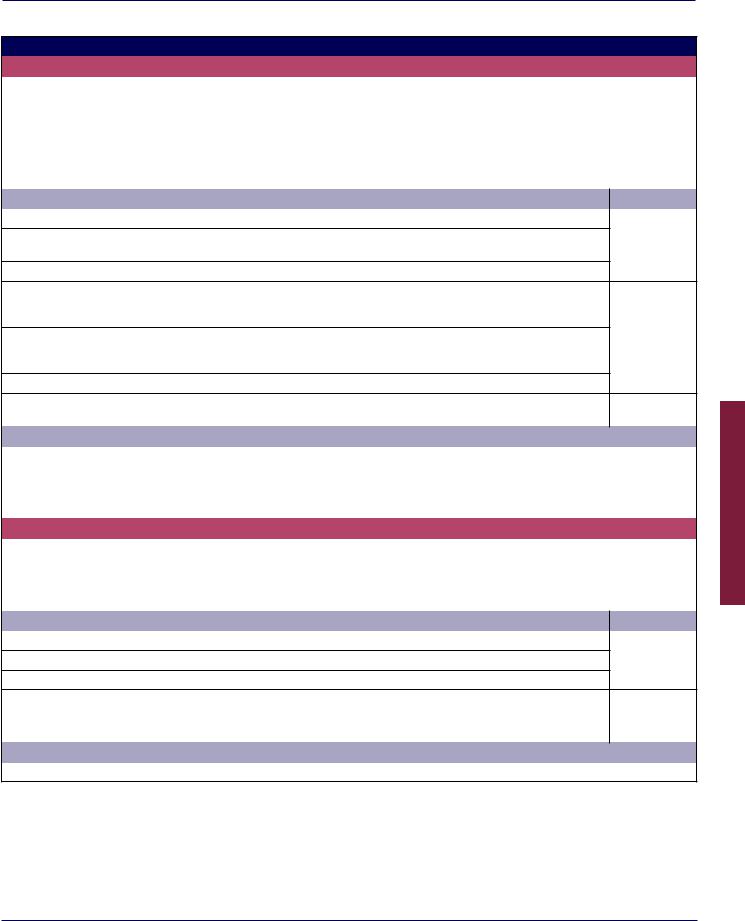
CHAPTER 4 COBIT GOVERNANCE AND MANAGEMENT OBJECTIVES—DETAILED GUIDANCE
A. Component: Process (cont.)
Management Practice |
Example Metrics |
|
|
|
|
DSS06.03 Manage roles, responsibilities, access privileges and levels |
a. Number of incidents and audit findings due to access or separation- |
|
of authority. |
of-duties violations |
|
Manage business roles, responsibilities, levels of authority and |
b. Percent of business process roles with assigned access rights and |
|
segregation of duties needed to support the business process |
levels of authority |
|
objectives. Authorize access to all information assets related to |
c. Percent of business process roles with clear separation of duties |
|
business information processes, including those under the custody of |
|
|
the business, IT and third parties. This ensures that the business knows |
|
|
where the data are and who is handling data on its behalf. |
|
|
Activities |
|
Capability Level |
|
|
|
1. Allocate roles and responsibilities based on approved job descriptions and business process activities. |
2 |
|
2.Allocate levels of authority for approval of transactions, transaction limits and any other decisions relating to the business process, based on approved job roles.
3.Allocate roles for sensitive activities so there is a clear segregation of duties.
4. Allocate access rights and privileges based on the minimum that is required to perform job activities, based on pre-defined job |
3 |
roles. Remove or revise access rights immediately if the job role changes or a staff member leaves the business process area. |
|
Periodically review to ensure that the access is appropriate for the current threats, risk, technology and business need. |
|
5.On a regular basis, provide awareness and training regarding roles and responsibilities so that everyone understands their responsibilities; the importance of controls; and the security, integrity, confidentiality and privacy of company information in all its forms.
6.Ensure administrative privileges are sufficiently and effectively secured, tracked and controlled to prevent misuse.
7. Periodically review access control definitions, logs and exception reports. Ensure that all access privileges are valid and |
4 |
|
aligned with current staff members and their allocated roles. |
|
|
Related Guidance (Standards, Frameworks, Compliance Requirements) |
Detailed Reference |
|
|
|
|
HITRUST CSF version 9, September 2017 |
13.04 Collection, Use and Disclosure |
|
|
|
|
ISO/IEC 27002:2013/Cor.2:2015(E) |
7. Human resource security |
|
The CIS Critical Security Controls for Effective Cyber Defense Version |
CSC 5: Controlled Use of Administrative Privileges |
|
6.1, August 2016 |
|
|
Management Practice |
Example Metrics |
|
|
|
|
DSS06.04 Manage errors and exceptions. |
a. Frequency of processing inefficiencies due to incomplete data entry |
|
Manage business process exceptions and errors and facilitate |
b. Number of errors detected in a timely manner |
|
remediation, executing defined corrective actions and escalating as |
c. Number of data processing errors that were efficiently remediated |
|
necessary. This treatment of exceptions and errors provides assurance |
|
|
of the accuracy and integrity of the business information process. |
|
|
Activities |
|
Capability Level |
|
|
|
1. Review errors, exceptions and deviations. |
|
2 |
2.Follow up, correct, approve and resubmit source documents and transactions.
3.Maintain evidence of remedial actions.
4. |
Define and maintain procedures to assign ownership for errors and exceptions, correct errors, override errors and handle out- |
3 |
|
|
of-balance conditions. |
|
|
5. |
Report relevant business information process errors in a timely manner to perform root cause and trending analysis. |
4 |
|
Related Guidance (Standards, Frameworks, Compliance Requirements) |
Detailed Reference |
|
|
|
|
|
|
No related guidance for this management practice |
|
||
Support and Service Deliver,
267
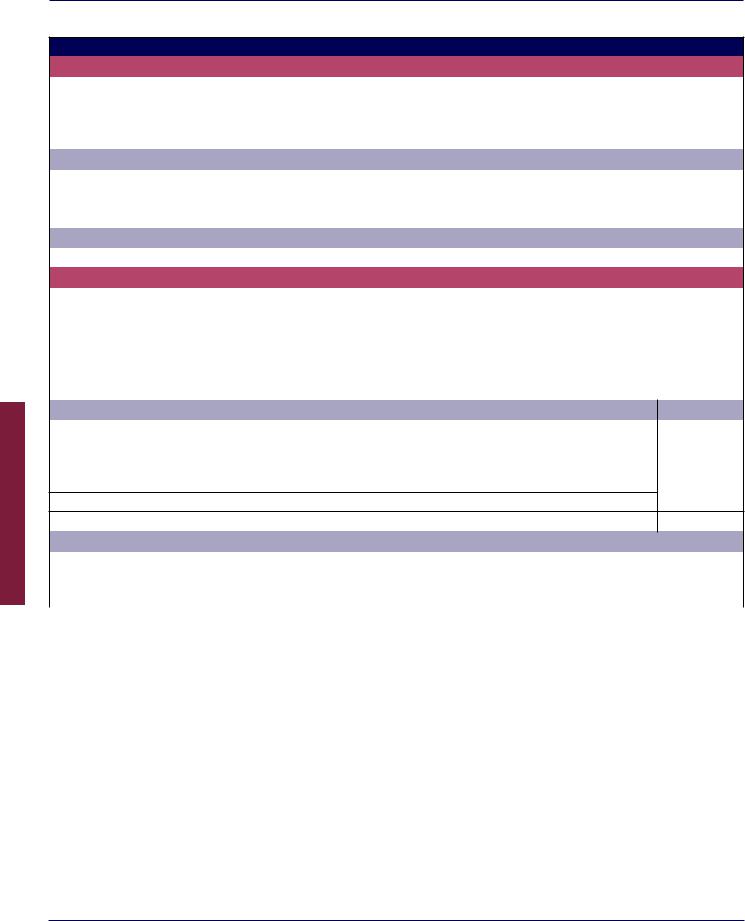
Build, Acquire and Implement
COBIT® 2019 FRAMEWORK: GOVERNANCE AND MANAGEMENT OBJECTIVES
A. Component: Process (cont.)
Management Practice |
Example Metrics |
|
|
|
|
|
|
DSS06.05 Ensure traceability and accountability for information events. |
a. Number of incidents in which transaction history cannot be recovered |
||
Ensure that business information can be traced to an originating |
b. Percent of completeness of traceable transaction log |
|
|
business event and associated with accountable parties. This |
|
|
|
discoverability provides assurance that business information is reliable |
|
|
|
and has been processed in accordance with defined objectives. |
|
|
|
Activities |
|
|
Capability Level |
|
|
|
|
1. Capture source information, supporting evidence and the record of transactions. |
|
2 |
|
2. Define retention requirements, based on business requirements, to meet operational, financial reporting and compliance needs. |
|
3 |
|
|
|
|
|
3. Dispose of source information, supporting evidence and the record of transactions in accordance with the retention policy. |
|
|
|
|
|
|
|
Related Guidance (Standards, Frameworks, Compliance Requirements) |
Detailed Reference |
|
|
No related guidance for this management practice |
|
|
|
|
|
|
|
Management Practice |
Example Metrics |
|
|
|
|
||
DSS06.06 Secure information assets. |
a. Cases of sensitive transaction data delivered to wrong recipient |
||
Secure information assets accessible by the business through approved |
b. Frequency of compromised integrity of critical data |
|
|
methods, including information in electronic form (e.g., portable media |
|
|
|
devices, user applications and storage devices, or other methods |
|
|
|
that create new assets in any form), information in physical form |
|
|
|
(e.g., source documents or output reports) and information during |
|
|
|
transit. This benefits the business by providing end-to-end safeguarding |
|
|
|
of information. |
|
|
|
Activities |
|
|
Capability Level |
1. Restrict use, distribution and physical access of information according to its classification. |
2 |
||
|
|
|
|
2. Provide acceptable use awareness and training. |
|
|
|
|
|
||
3. Apply data classification and acceptable use and security policies and procedures to protect information assets under the |
3 |
||
control of the business. |
|
|
|
4. Identify and implement processes, tools and techniques to reasonably verify compliance.
5. Report to business and other stakeholders on violations and deviations. |
4 |
|
|
Related Guidance (Standards, Frameworks, Compliance Requirements) |
Detailed Reference |
|
|
CMMI Cybermaturity Platform, 2018 |
AC.MP Manage Access Permissions |
|
|
The CIS Critical Security Controls for Effective Cyber Defense Version |
CSC 18: Application Software Security |
6.1, August 2016 |
|
268

CHAPTER 4 COBIT GOVERNANCE AND MANAGEMENT OBJECTIVES—DETAILED GUIDANCE
B. Component: Organizational Structures
Key Management Practice |
|
Executive Committee |
Chief Information Officer |
I&T Governance Board |
Chief Information Security Officer |
Business Process Owners |
Data Management Function |
Service Manager |
Information Security Manager |
Legal Counsel |
DSS06.01 Align control activities embedded in business processes with enterprise objectives. |
R |
|
A |
|
R |
|
|
|
|
|
|
|
|
|
|
|
|
|
|
|
|
DSS06.02 Control the processing of information. |
|
|
R |
A |
R |
R |
R |
|
|
R |
DSS06.03 Manage roles, responsibilities, access privileges and levels of authority. |
|
R |
A |
R |
R |
|
|
R |
|
|
DSS06.04 Manage errors and exceptions. |
|
|
R |
|
R |
A |
|
R |
|
|
|
|
|
|
|
|
|
|
|
|
|
DSS06.05 Ensure traceability and accountability for information events. |
|
|
R |
|
R |
A |
|
|
|
|
DSS06.06 Secure information assets. |
|
|
R |
|
R |
A |
|
|
|
|
Related Guidance (Standards, Frameworks, Compliance Requirements) |
Detailed Reference |
|
|
|
|
|
|
|
|
|
|
|
|
|
|
|
|
|
|
|
|
No related guidance for this component |
|
|
|
|
|
|
|
|
|
|
C. Component: Information Flows and Items (see also Section 3.6)
Management Practice |
|
Inputs |
Outputs |
|
|
DSS06.01 Align control activities embedded in business |
From |
Description |
Description |
To |
|
processes with enterprise objectives. |
|
|
|
|
|
APO01.07 |
• Data classification |
Root cause analyses and |
BAI06.01; |
||
|
|||||
|
|
guidelines |
recommendations |
MEA02.04; |
|
|
|
• Data integrity |
|
MEA04.04; |
|
|
|
procedures |
|
MEA04.06; |
|
|
|
|
|
MEA04.07 |
|
|
|
|
Results of processing |
MEA02.04 |
|
|
|
|
effectiveness reviews |
|
|
DSS06.02 Control the processing of information. |
BAI05.05 |
Operation and use plan |
Processing control |
Internal |
|
|
|
|
reports |
|
|
|
BAI07.02 |
Migration plan |
|
||
|
|
|
|||
DSS06.03 Manage roles, responsibilities, access |
APO11.01 |
Quality management |
Allocated levels of |
APO01.05 |
|
privileges and levels of authority. |
|
system (QMS) roles, |
authority |
|
|
|
|
responsibilities and |
|
|
|
|
|
decision rights |
|
|
|
|
APO13.01 |
Information security |
Allocated roles and |
APO01.05 |
|
|
|
management system |
responsibilities |
|
|
|
|
(ISMS) scope statement |
|
|
|
|
DSS05.05 |
Access logs |
Allocated access rights |
APO07.04 |
|
|
EDM04.02 |
Assigned responsibilities |
|
|
|
|
|
for resource management |
|
|
Support and Service Deliver,
269

Build, Acquire and Implement
COBIT® 2019 FRAMEWORK: GOVERNANCE AND MANAGEMENT OBJECTIVES
C. Component: Information Flows and Items (see also Section 3.6) (cont.)
Management Practice |
|
|
|
Inputs |
|
|
|
Outputs |
|
|
||
|
|
|
|
|
|
|
|
|
|
|
|
|
DSS06.04 Manage errors and exceptions. |
|
From |
|
Description |
|
|
Description |
To |
|
|||
|
|
|
|
|
|
|
|
|
|
|
|
|
|
|
|
|
|
|
|
|
Error reports and root |
Internal |
|
||
|
|
|
|
|
|
|
|
cause analysis |
|
|
||
|
|
|
|
|
|
|
|
Evidence of error |
MEA02.04 |
|
||
|
|
|
|
|
|
|
|
correction and |
|
|
||
|
|
|
|
|
|
|
|
remediation |
|
|
||
DSS06.05 Ensure traceability and accountability for |
|
|
|
|
|
Record of transactions |
Internal |
|
||||
information events. |
|
|
|
|
|
|
|
|
|
|
|
|
|
|
|
|
|
|
Retention requirements |
Internal; |
|
||||
|
|
|
|
|
|
|
|
|
||||
|
|
|
|
|
|
|
|
|
|
|
APO14.09 |
|
|
|
|
|
|
|
|
|
|
|
|
|
|
DSS06.06 Secure information assets. |
|
|
|
|
|
Reports of violations |
DSS05.03 |
|
||||
Related Guidance (Standards, Frameworks, Compliance Requirements) |
Detailed Reference |
|
|
|
|
|
||||||
|
|
|
|
|
|
|
|
|||||
National Institute of Standards and Technology Special Publication |
3.1 Preparation (Task 10, 11): Inputs and Outputs |
|
|
|||||||||
800-37, Revision 2, September 2017 |
|
|
|
|
|
|
|
|
|
|
|
|
|
|
|
|
|
|
|
|
|
|
|
|
|
D. Component: People, Skills and Competencies |
|
|
|
|
|
|
|
|
|
|||
Skill |
|
Related Guidance (Standards, Frameworks, Compliance Requirements) |
|
|
Detailed Reference |
|
||||||
|
|
|
|
|
|
|
|
|
||||
Information security |
|
Skills Framework for the Information Age V6, 2015 |
|
|
SCTY |
|
|
|||||
|
|
|
|
|
|
|
|
|
||||
Security administration |
|
Skills Framework for the Information Age V6, 2015 |
|
|
SCAD |
|
|
|||||
|
|
|
|
|
|
|
|
|
|
|
||
E. Component: Policies and Procedures |
|
|
|
|
|
|
|
|
|
|||
Relevant Policy |
Policy Description |
|
|
Related Guidance |
|
|
Detailed Reference |
|
||||
Business controls guidance |
Defines business process controls |
|
|
|
|
|
|
|
|
|||
|
|
to ensure proper control and |
|
|
|
|
|
|
|
|
||
|
|
reduce risk of fraud and errors. |
|
|
|
|
|
|
|
|
||
|
|
Identifies manual controls to |
|
|
|
|
|
|
|
|
||
|
|
protect documents (e.g., source, |
|
|
|
|
|
|
|
|
||
|
|
input, processing and output |
|
|
|
|
|
|
|
|
||
|
|
documents); identifies supervisory |
|
|
|
|
|
|
|
|
||
|
|
controls to review the flow of |
|
|
|
|
|
|
|
|
||
|
|
documents and ensure correct |
|
|
|
|
|
|
|
|
||
|
|
processing. Includes I&T general |
|
|
|
|
|
|
|
|
||
|
|
controls (e.g., physical security, |
|
|
|
|
|
|
|
|
||
|
|
access and authentication, |
|
|
|
|
|
|
|
|
|
|
|
|
and change management) and |
|
|
|
|
|
|
|
|
||
|
|
application controls (e.g., edit |
|
|
|
|
|
|
|
|
||
|
|
checking, system configuration and |
|
|
|
|
|
|
|
|
||
|
|
security settings). |
|
|
|
|
|
|
|
|
|
|
|
|
|
|
|
|
|
|
|
|
|||
F. Component: Culture, Ethics and Behavior |
|
|
|
|
|
|
|
|
|
|||
Key Culture Elements |
|
|
Related Guidance |
|
|
Detailed Reference |
|
|||||
Create a culture that embraces the need for sound controls in business processes, building them into applications in development or requiring them in applications bought or accessed as a service. Encourage all employees to have a controls consciousness to protect all assets of the organization (e.g., paper records and facilities).
G. Component: Services, Infrastructure and Applications
•Automated application controls
•Event log auditing tools
270
